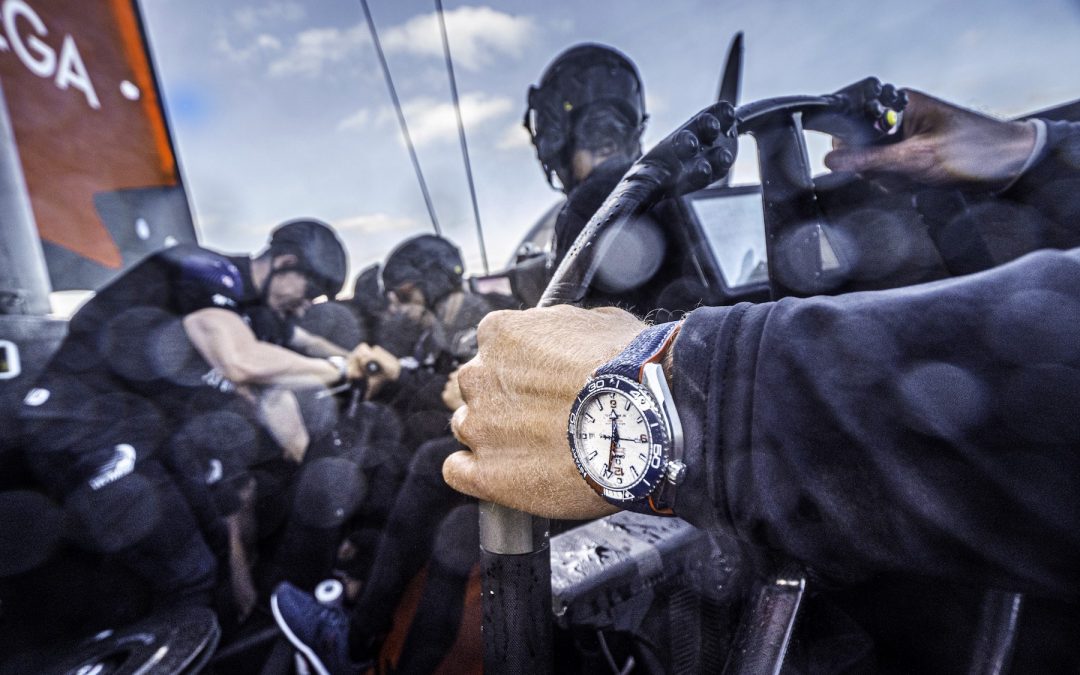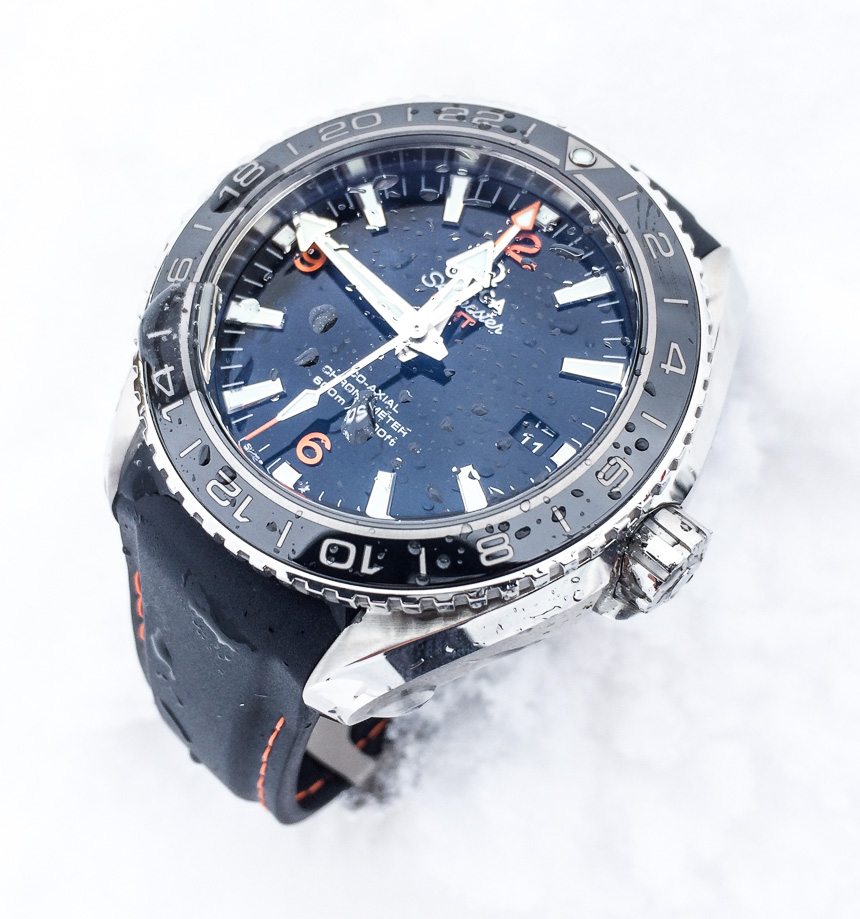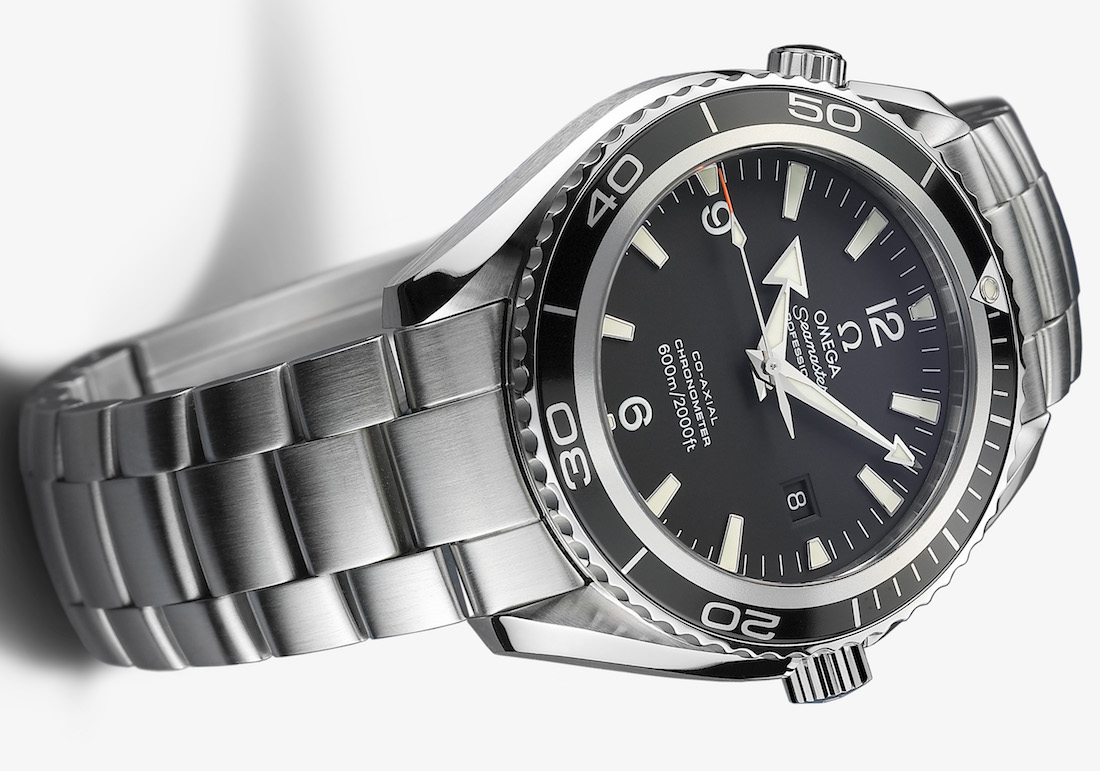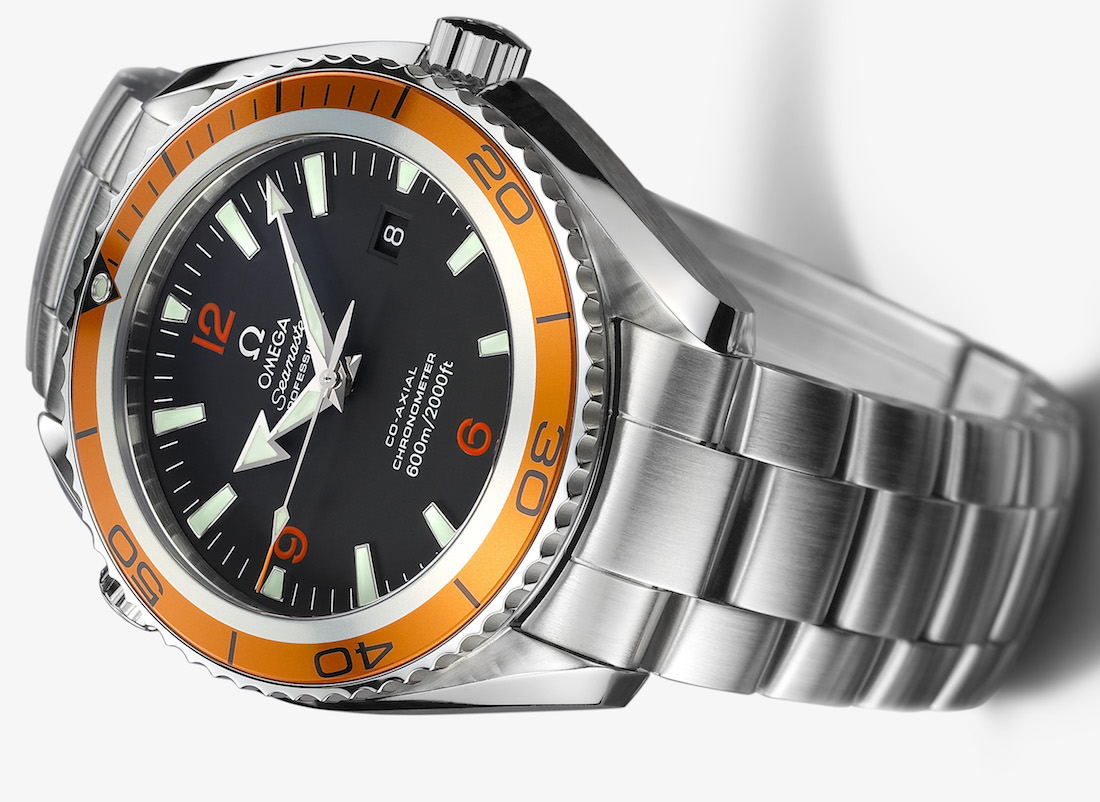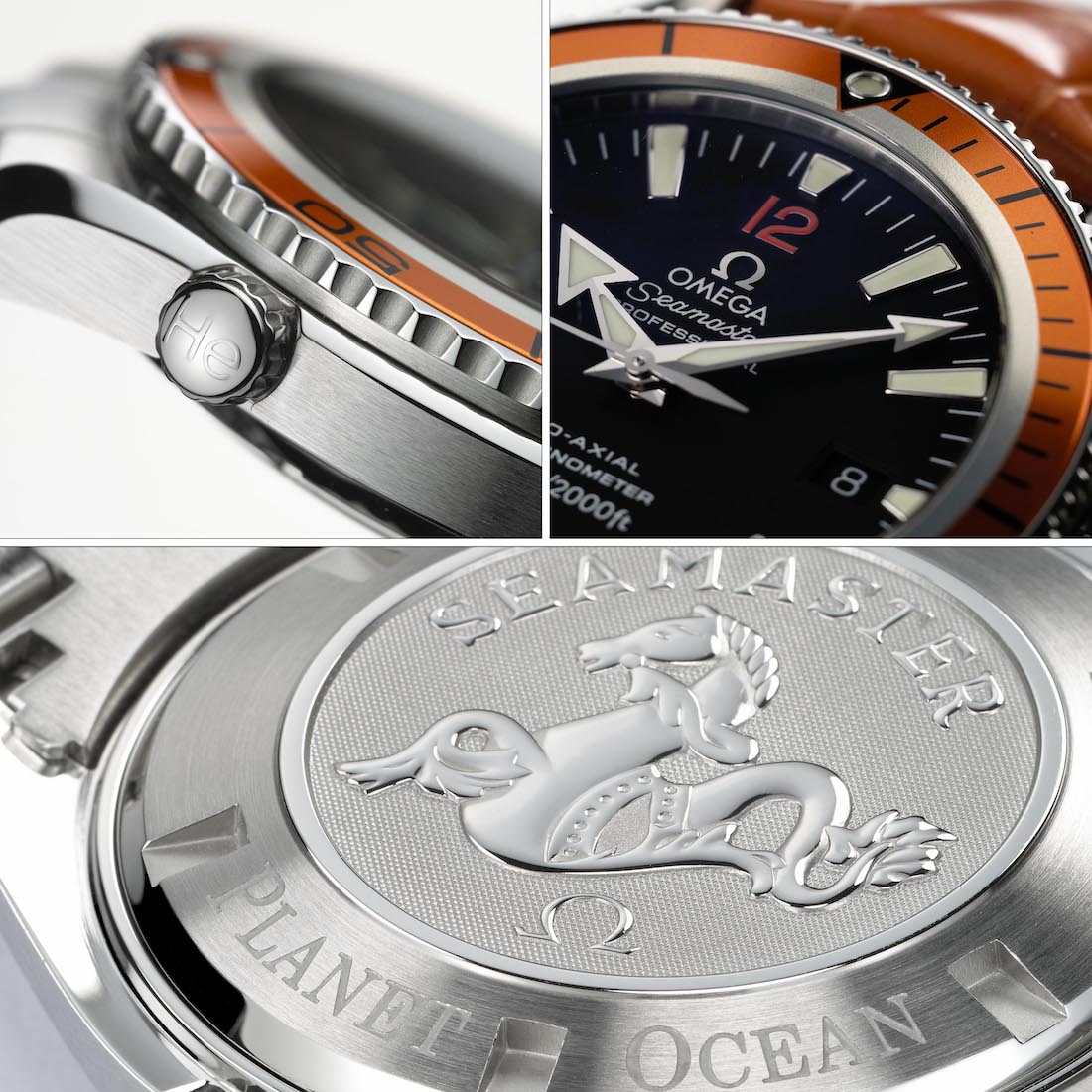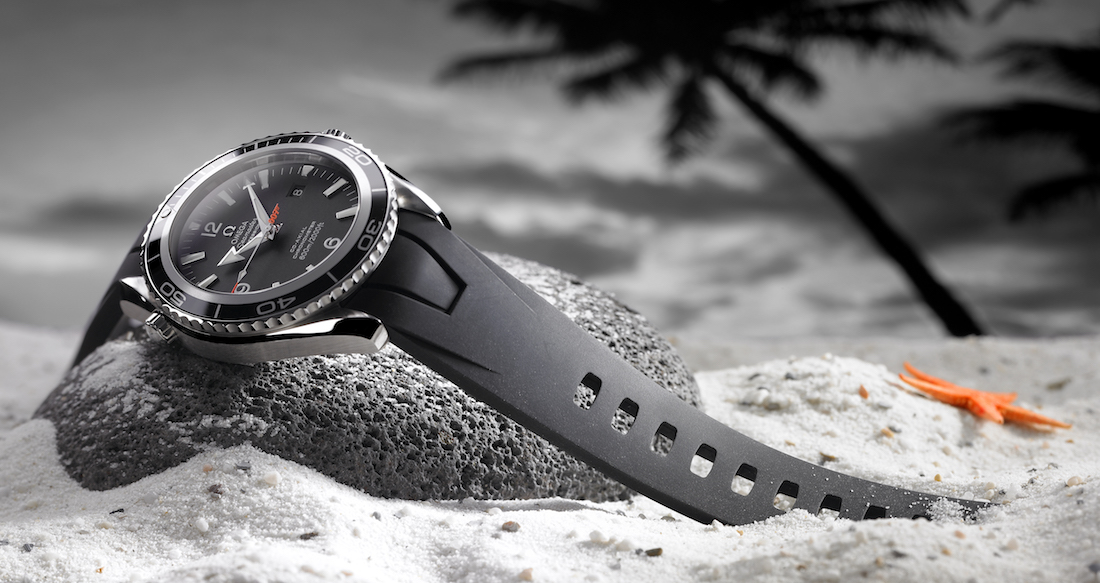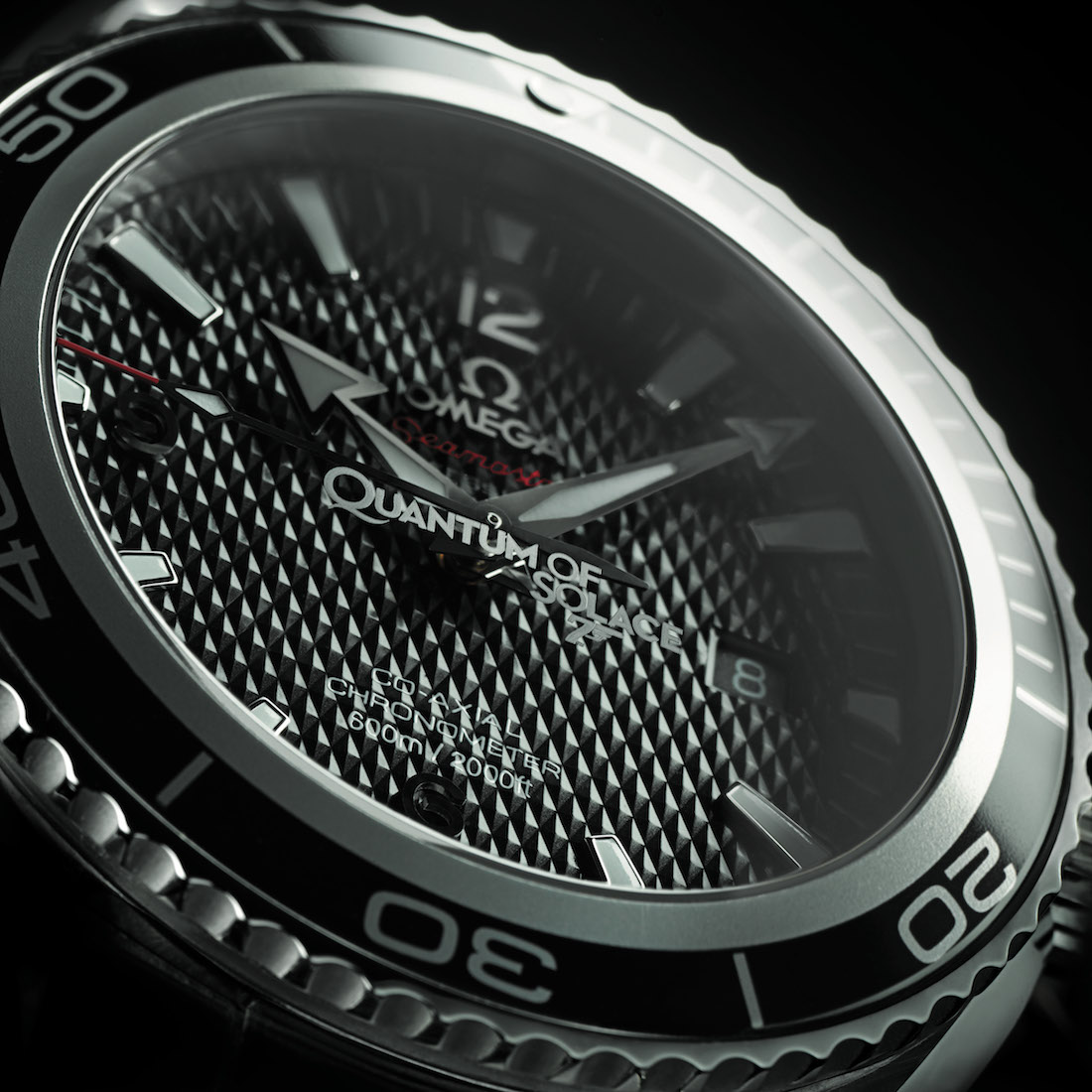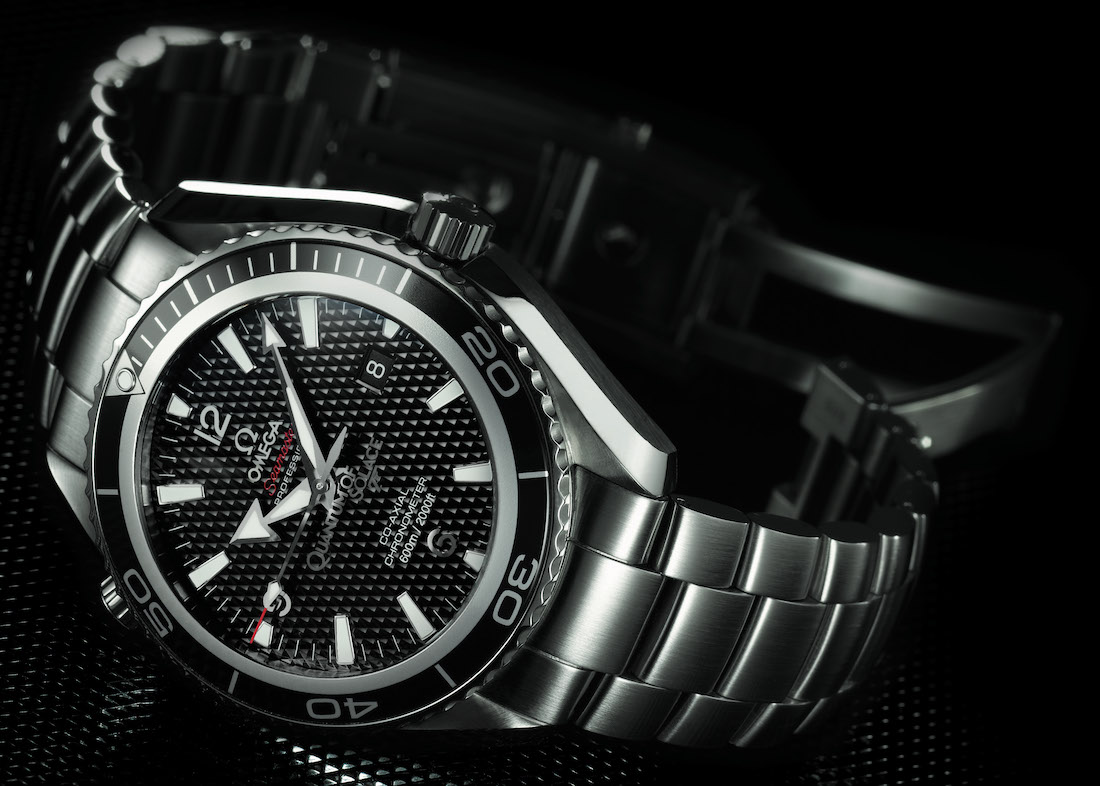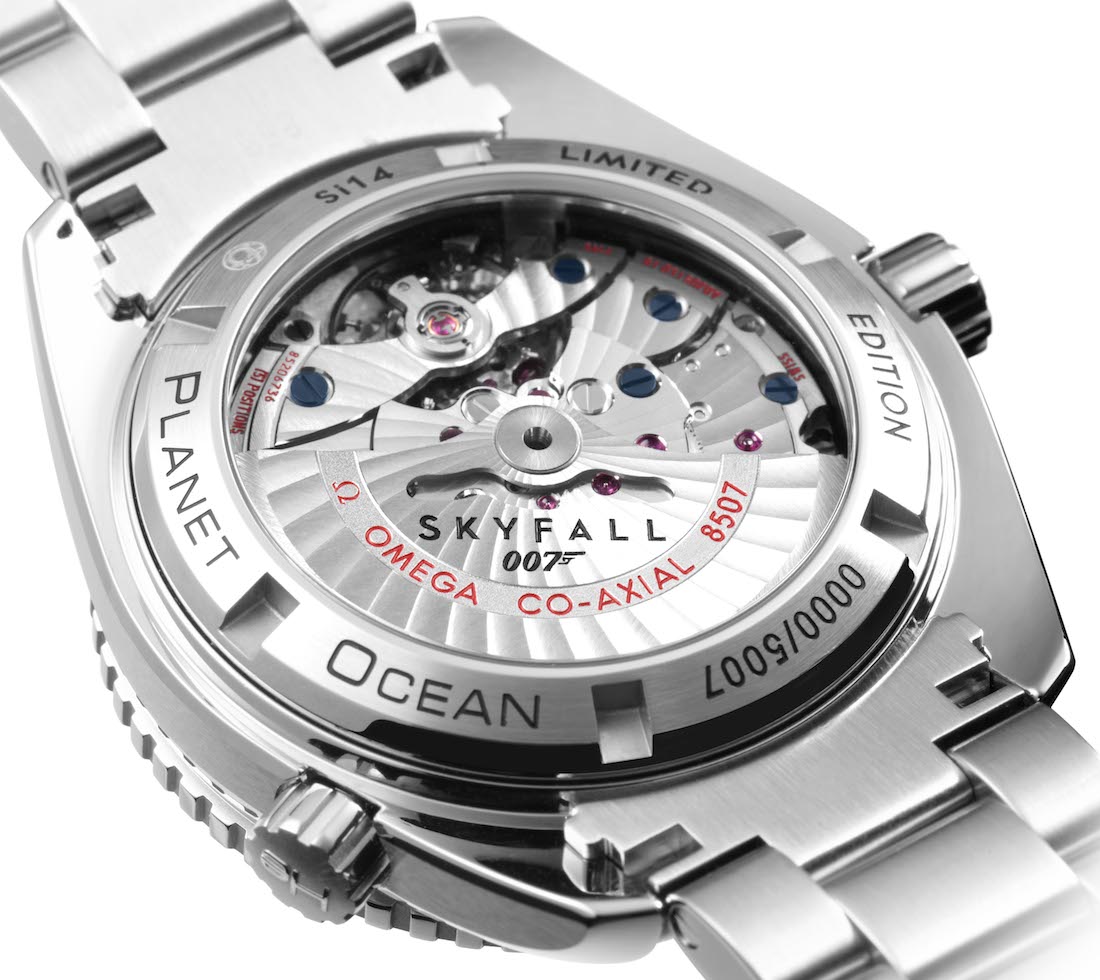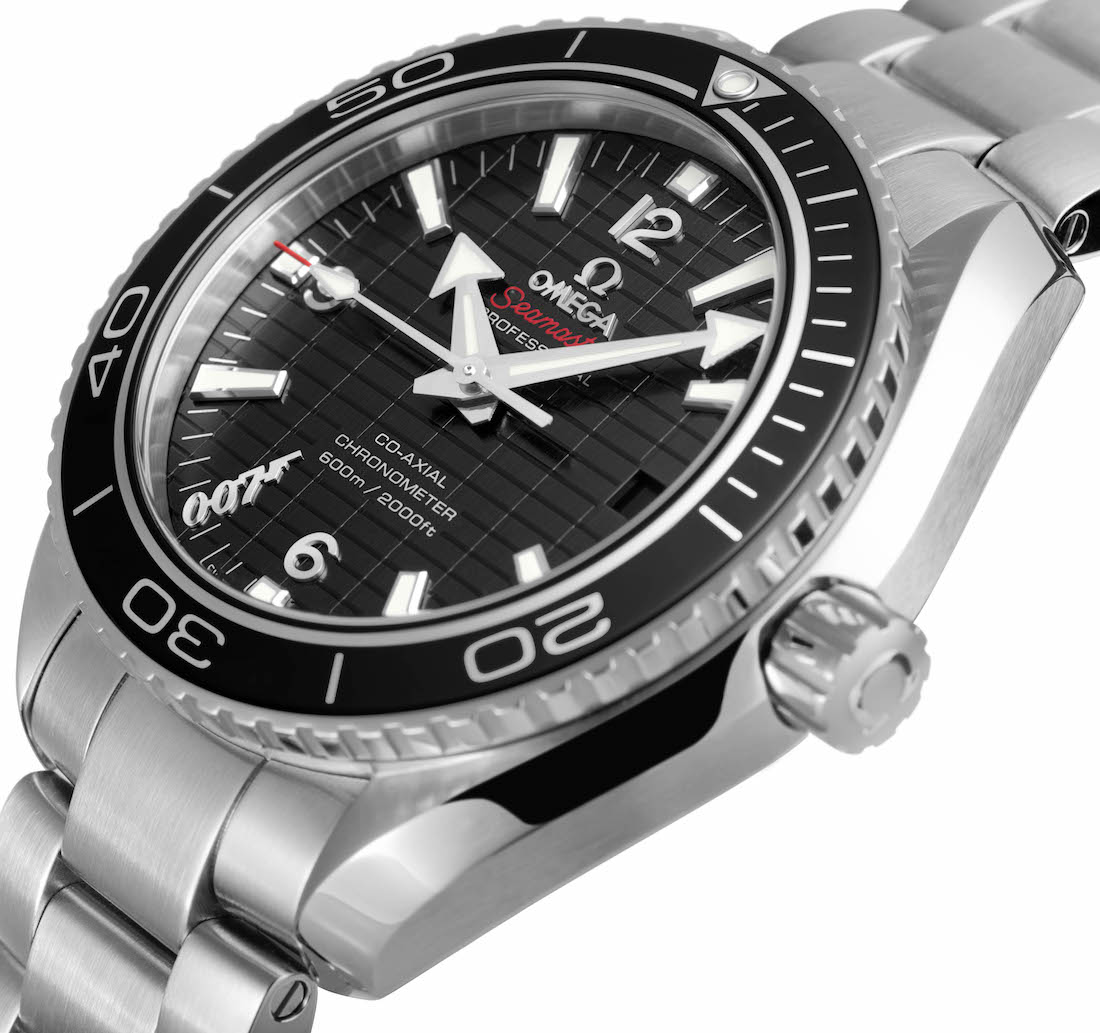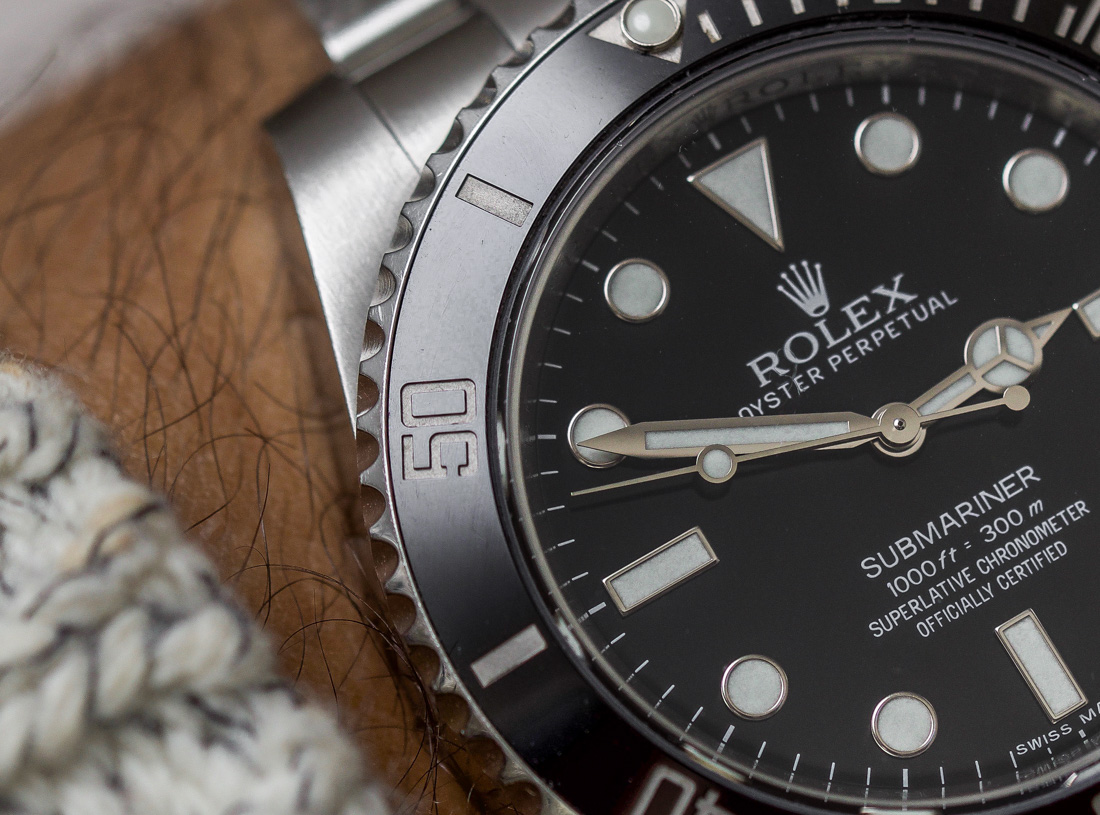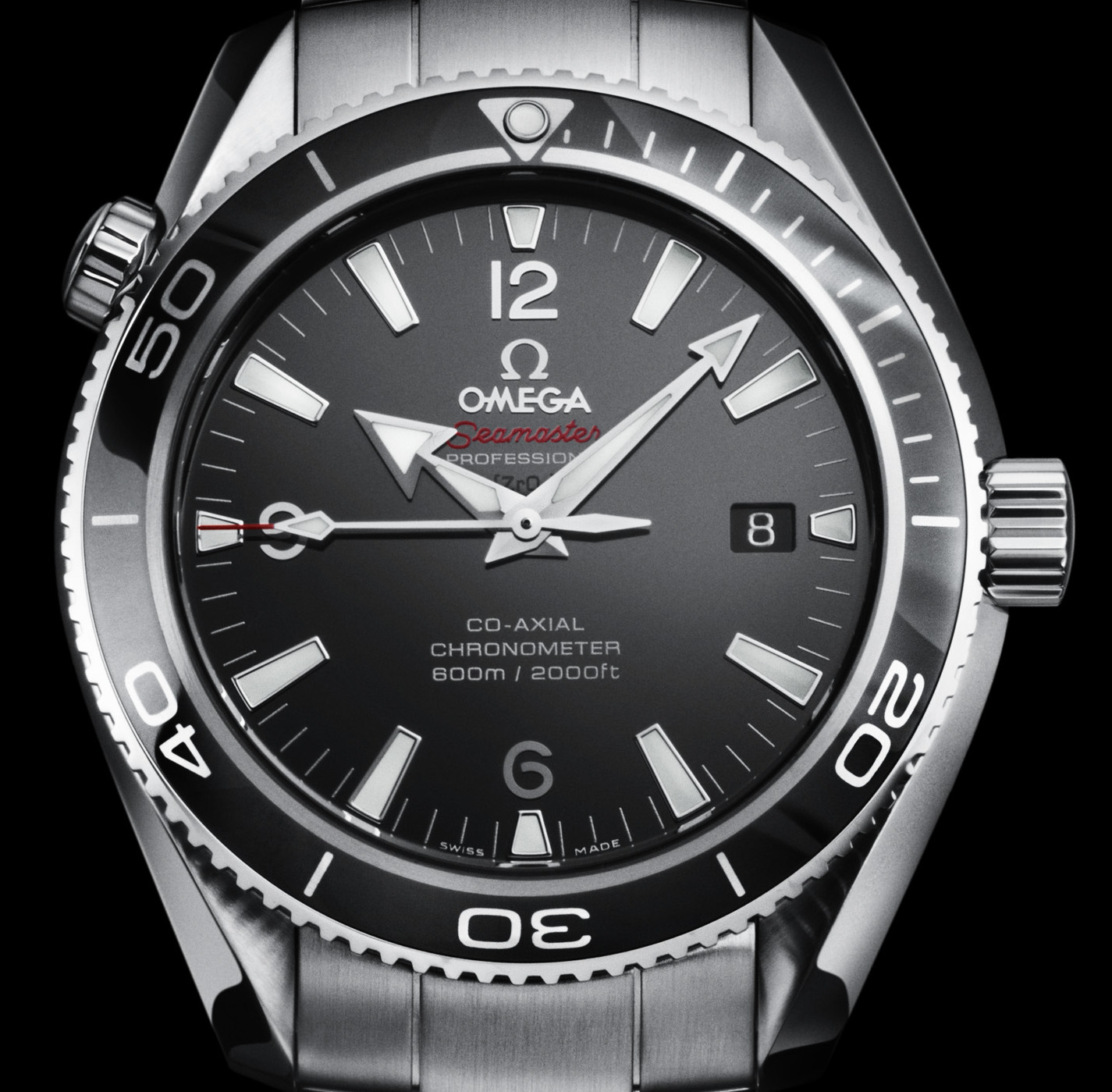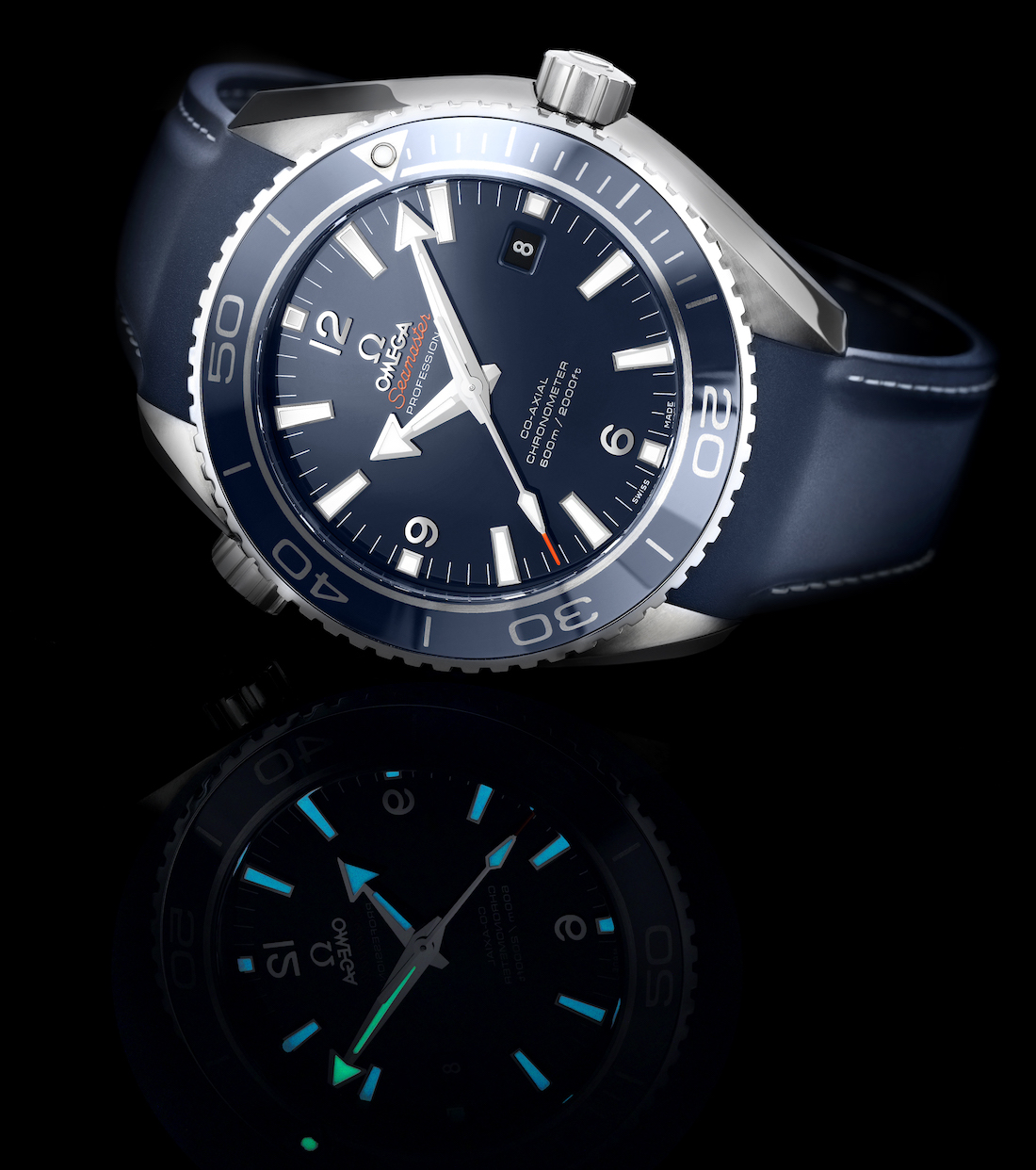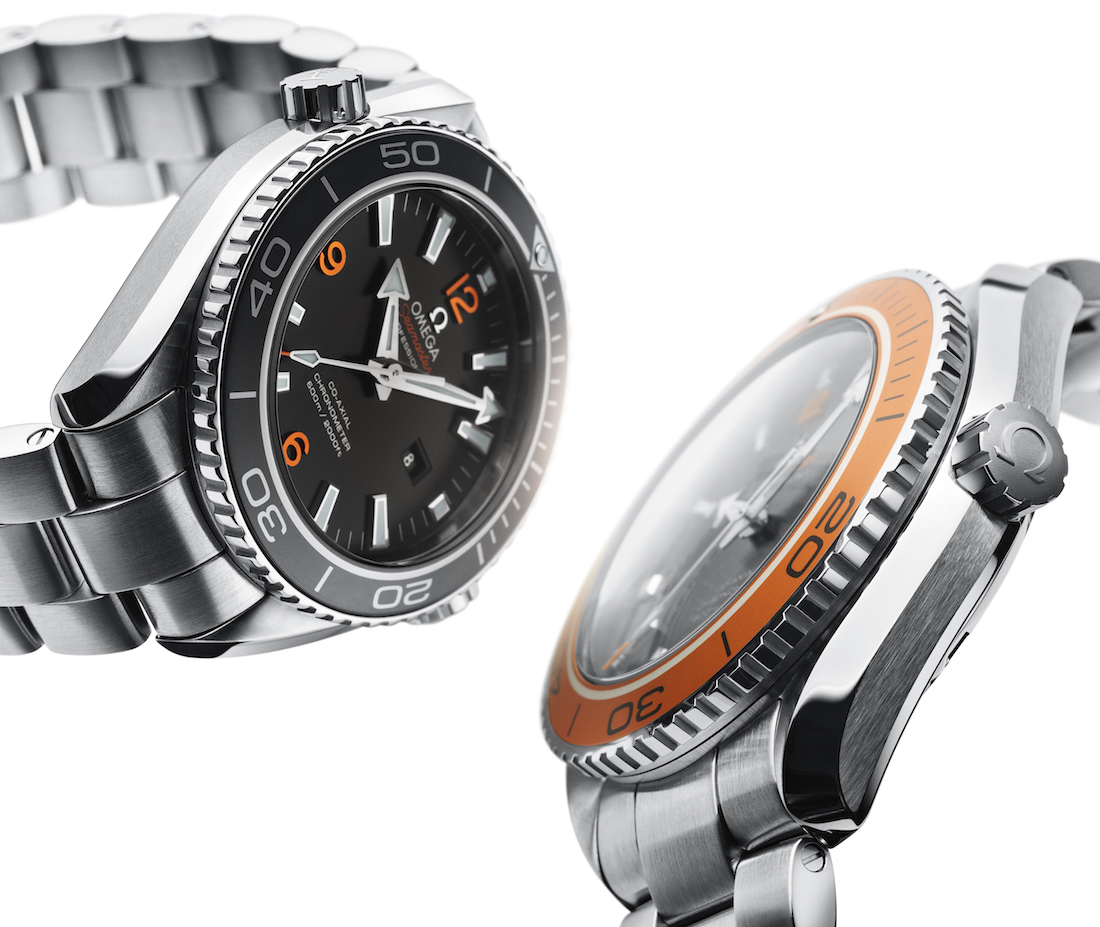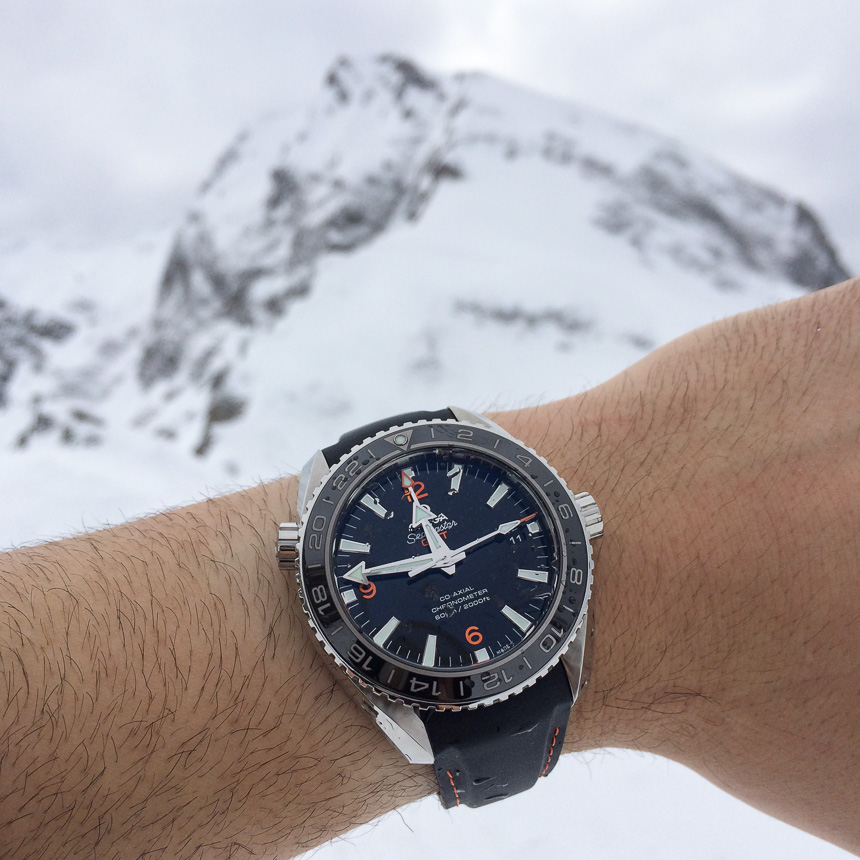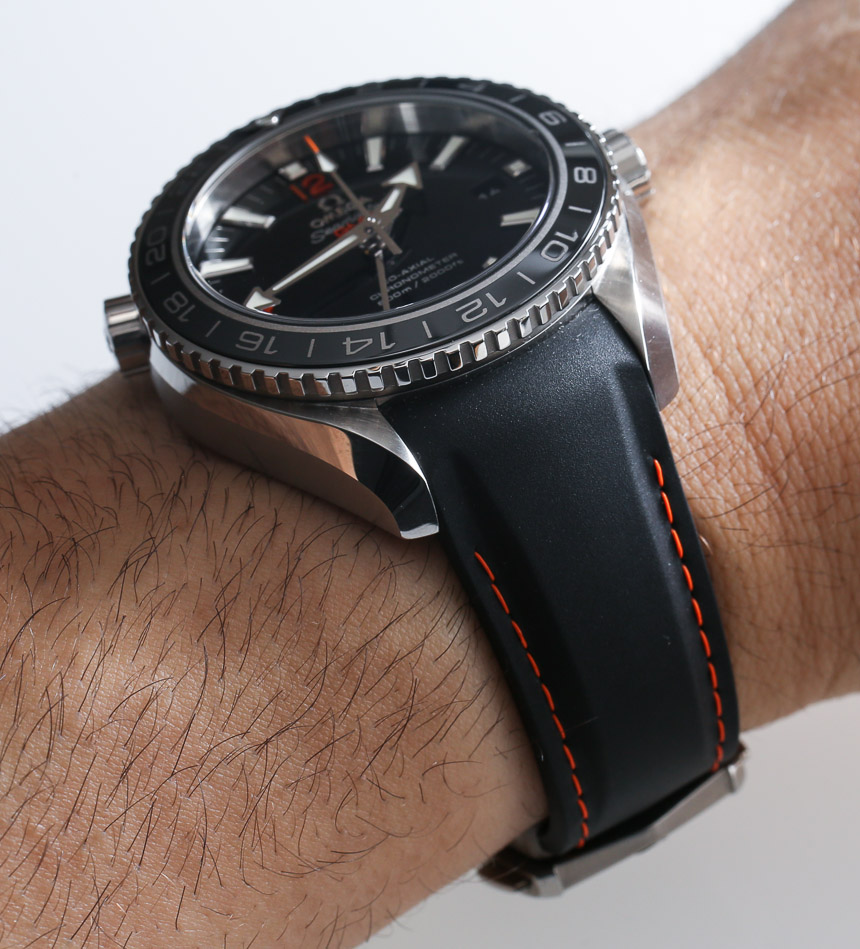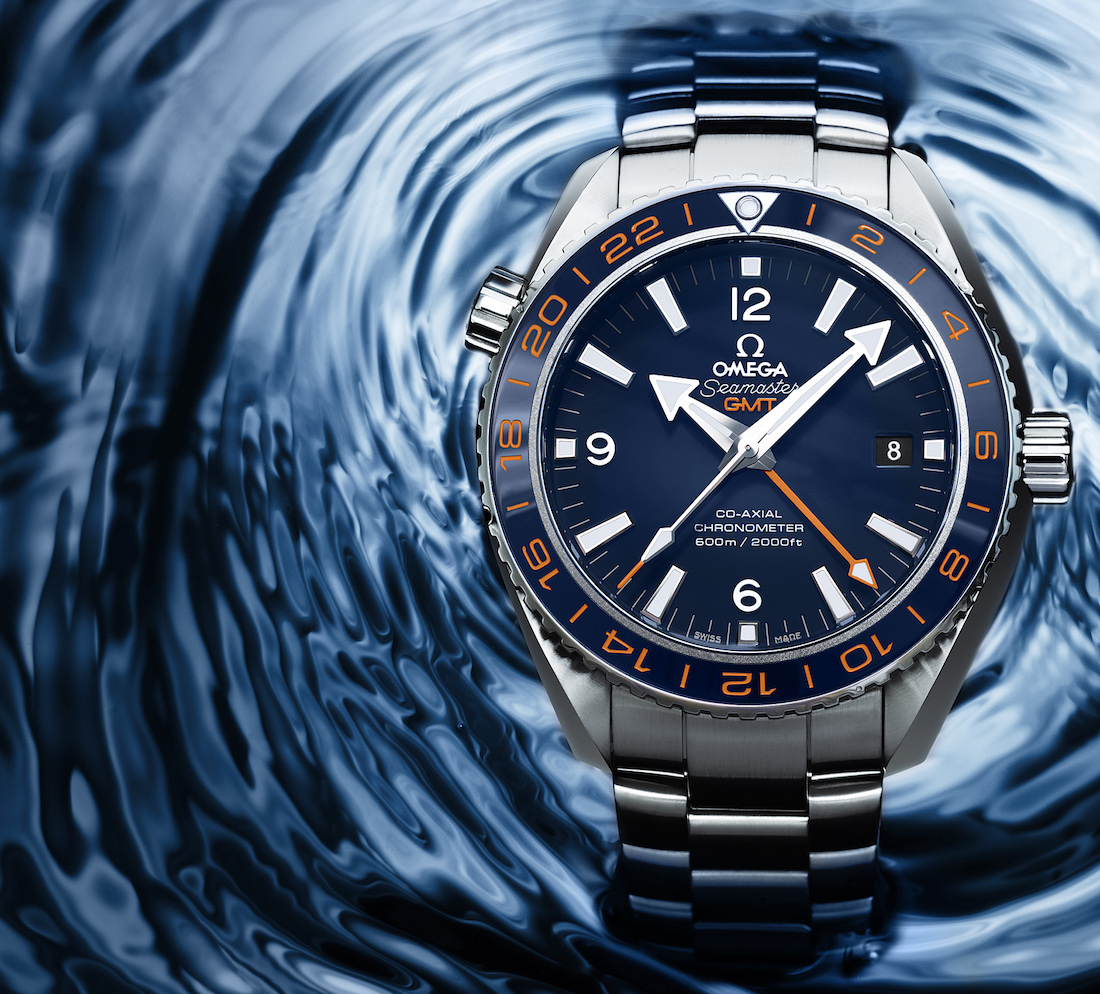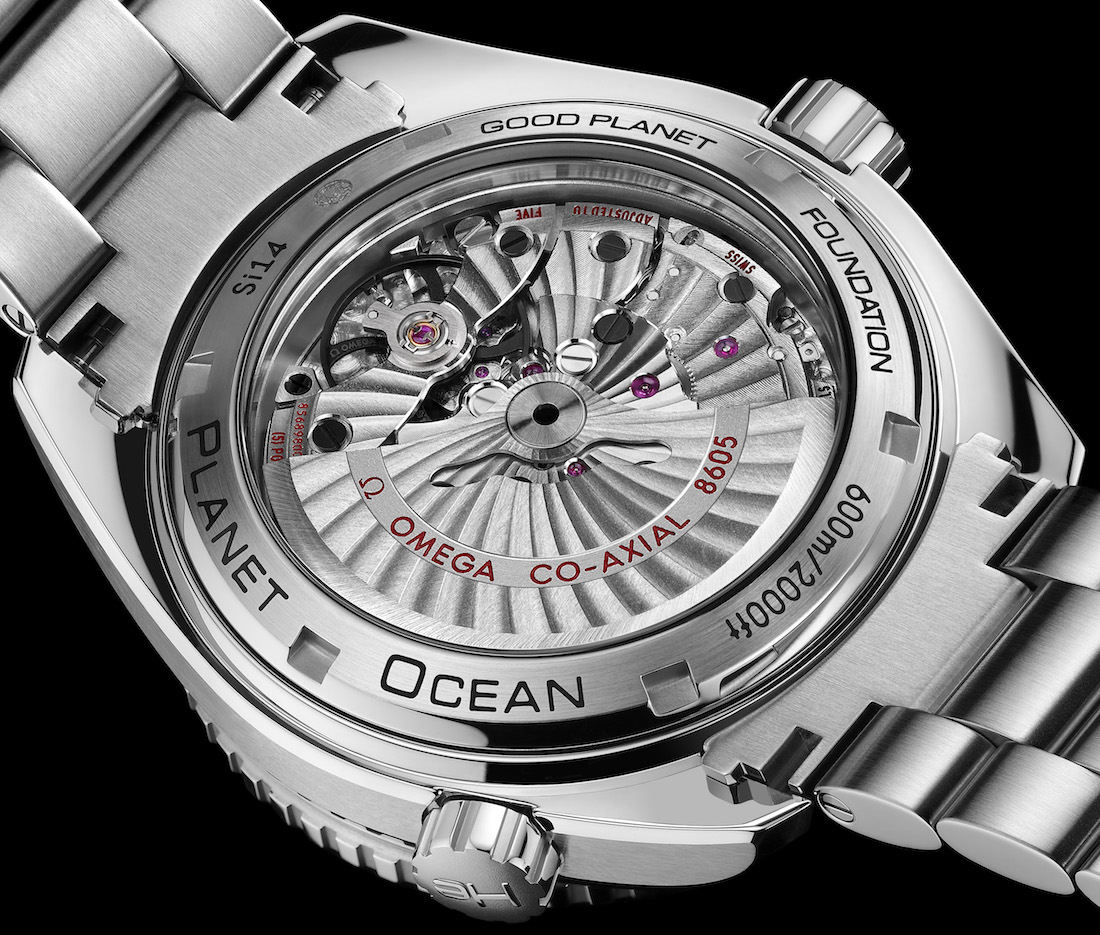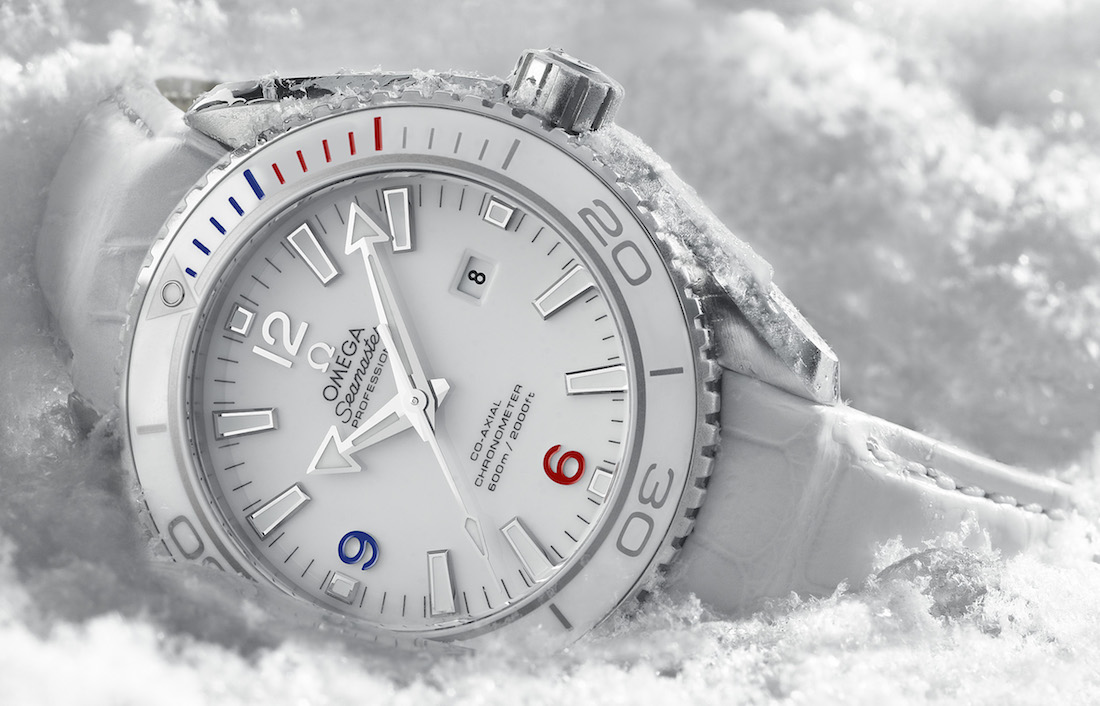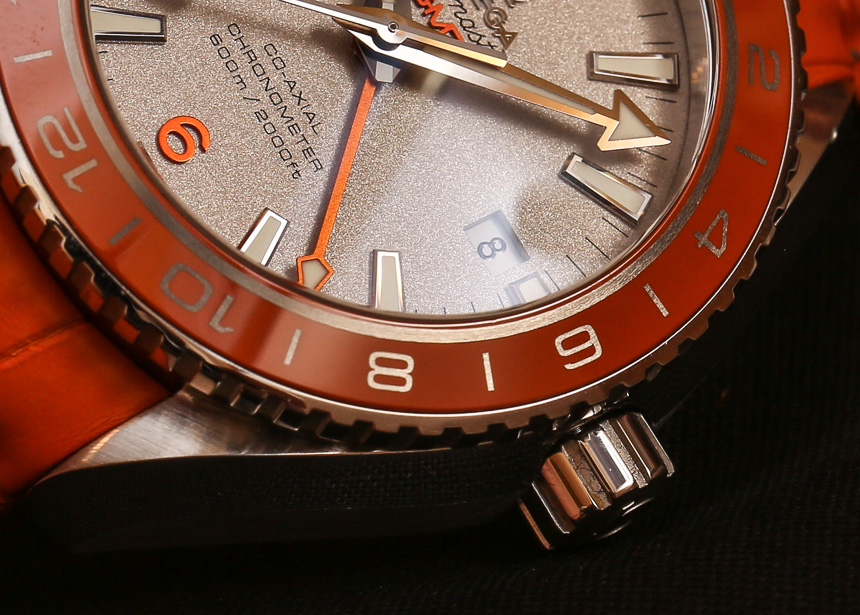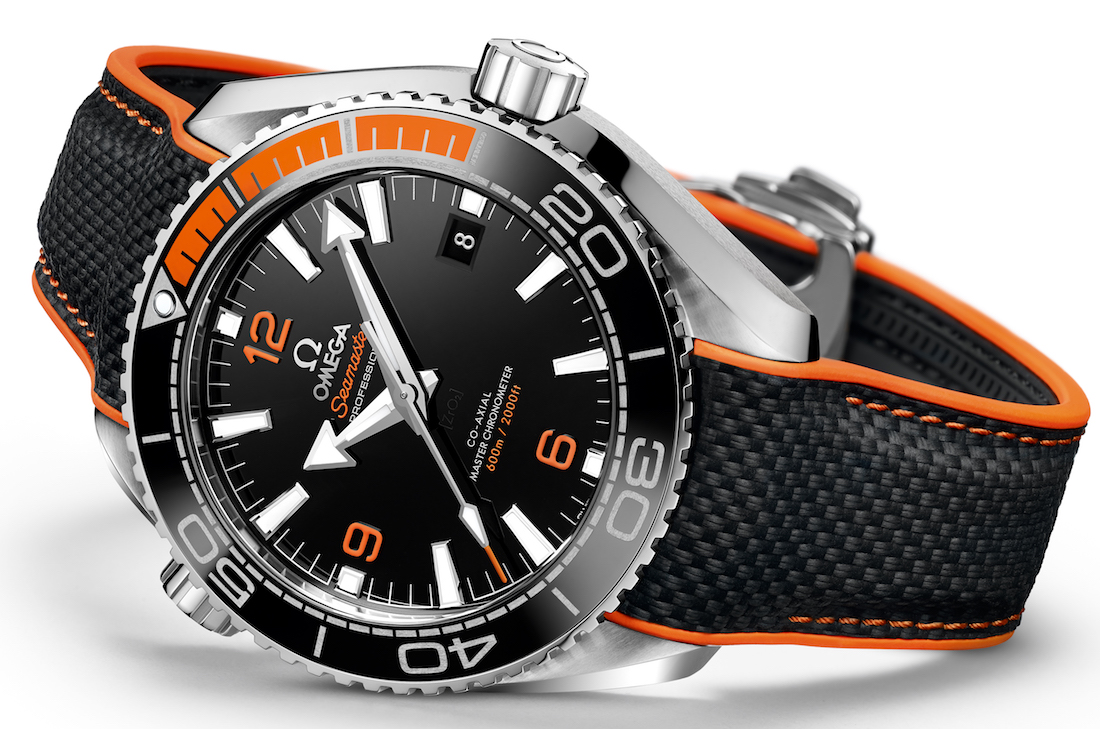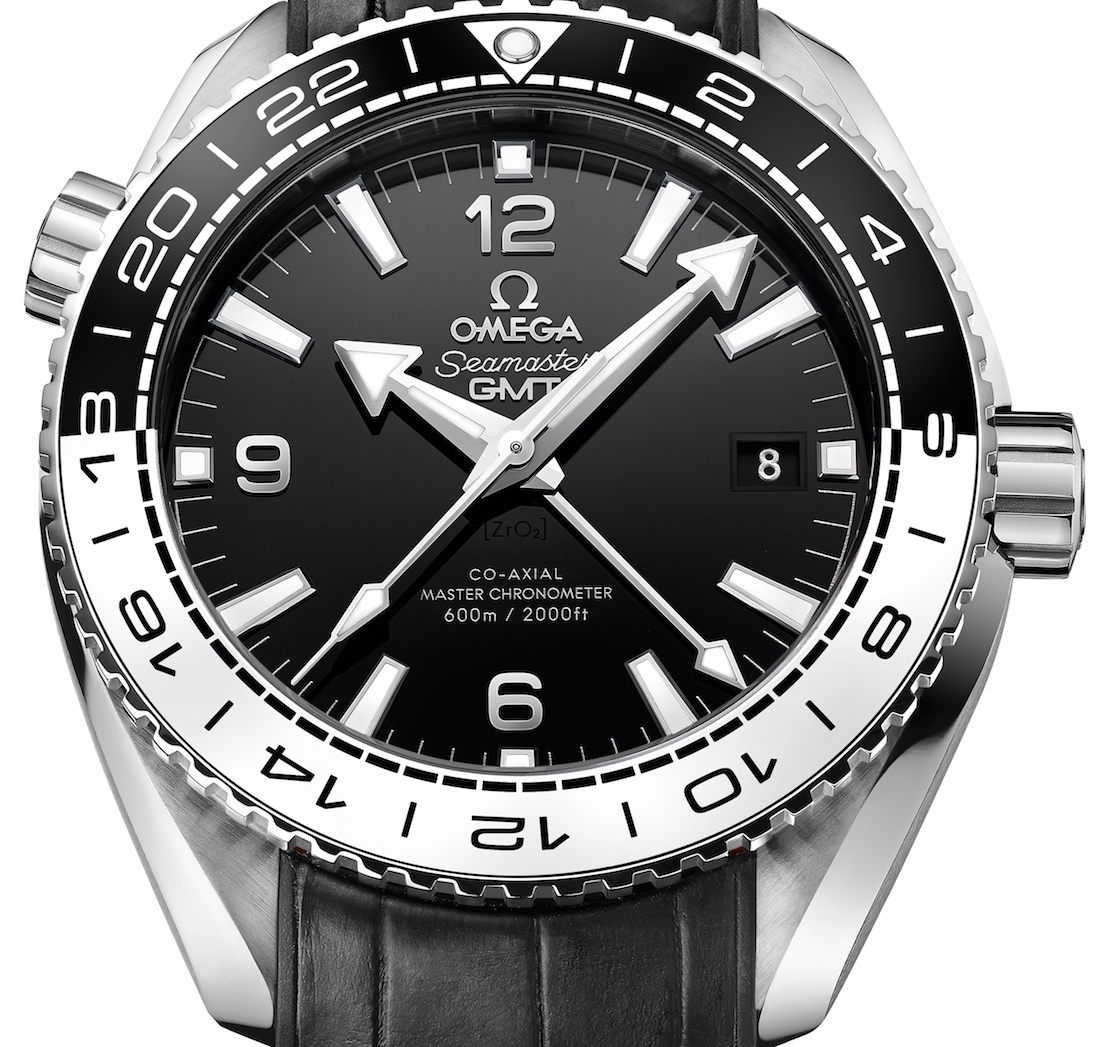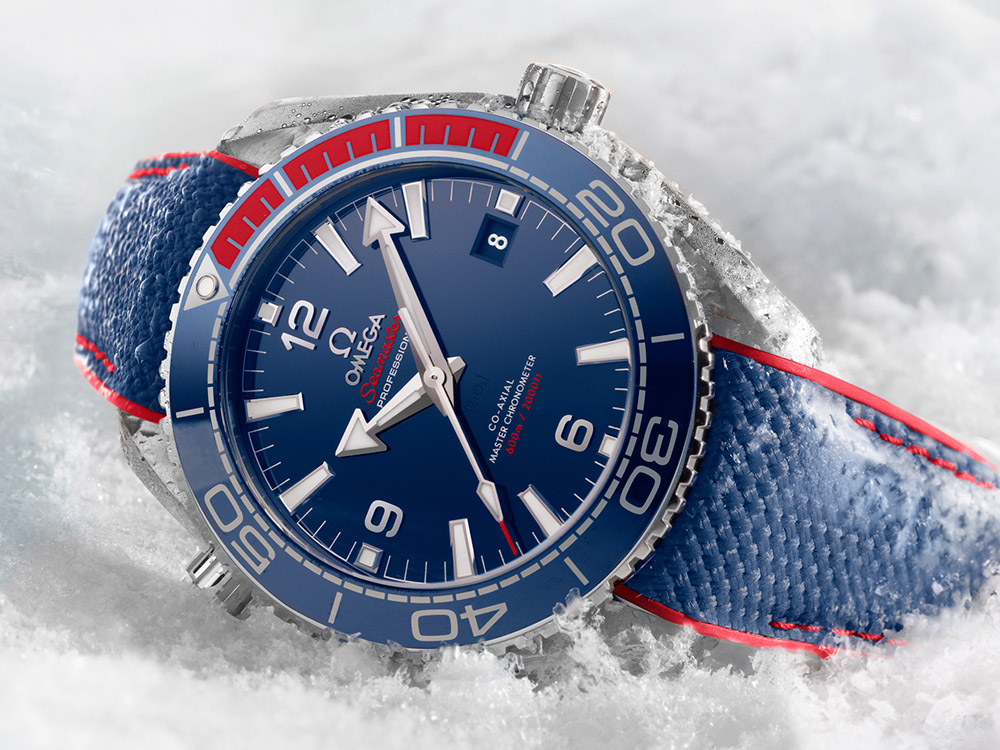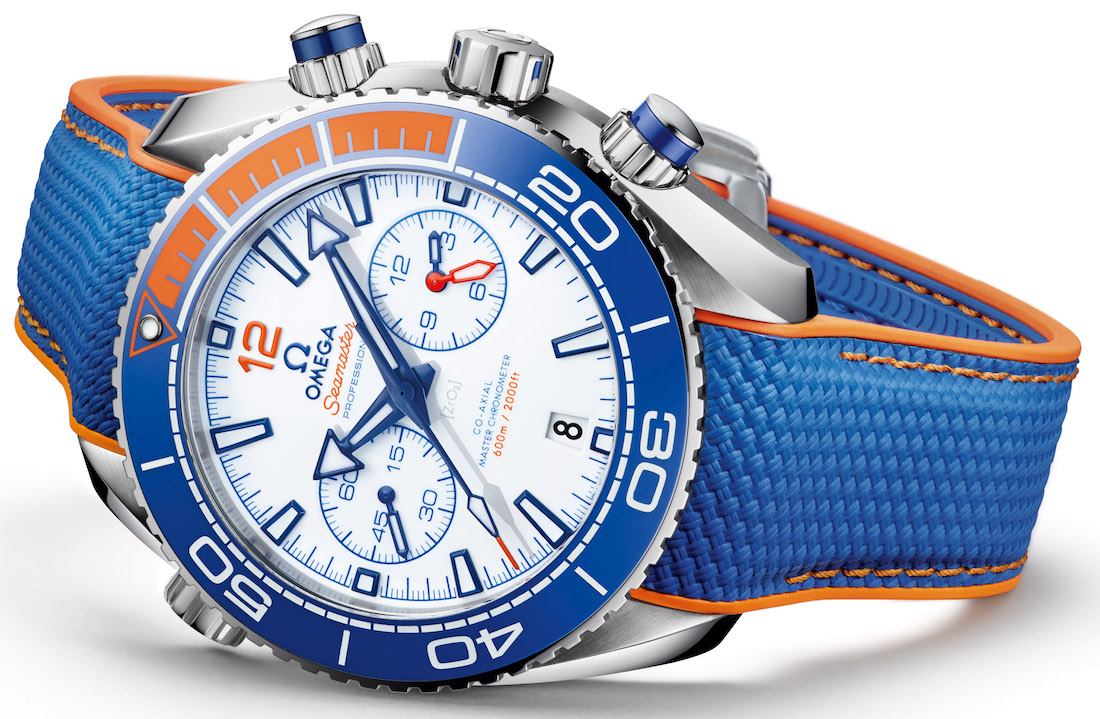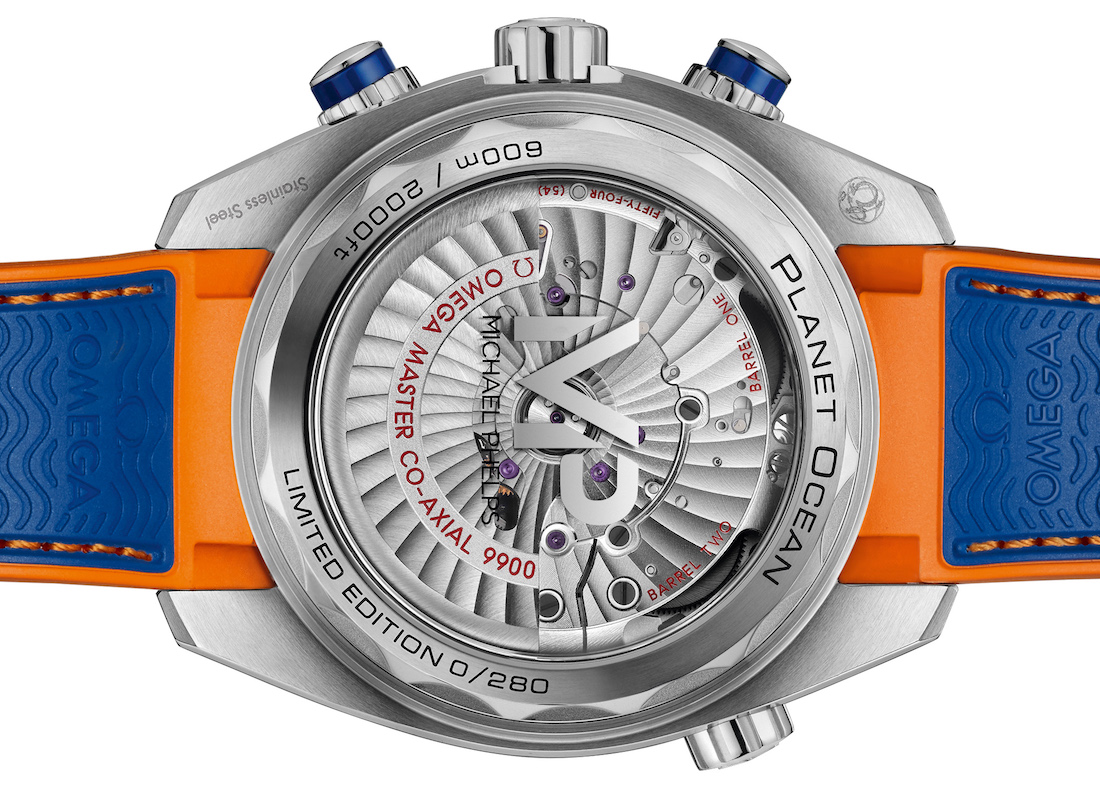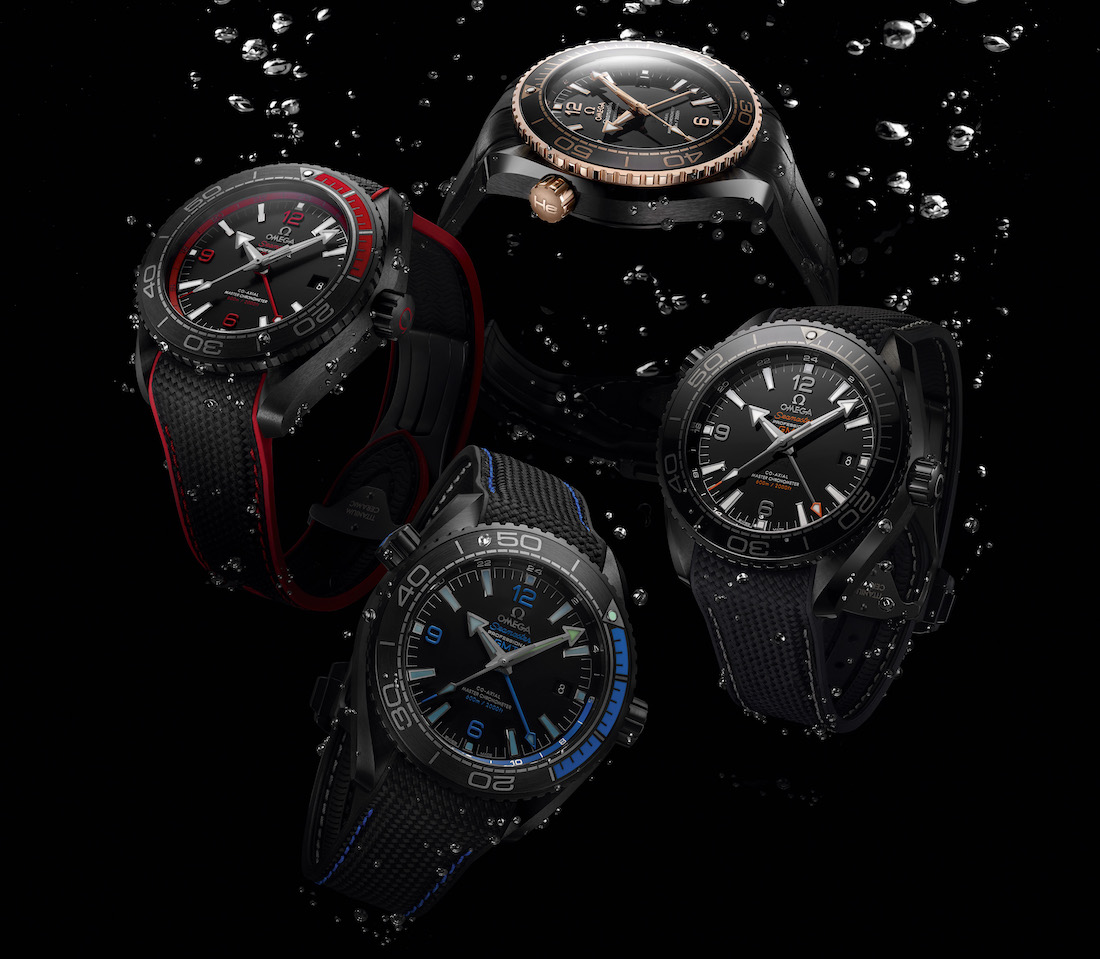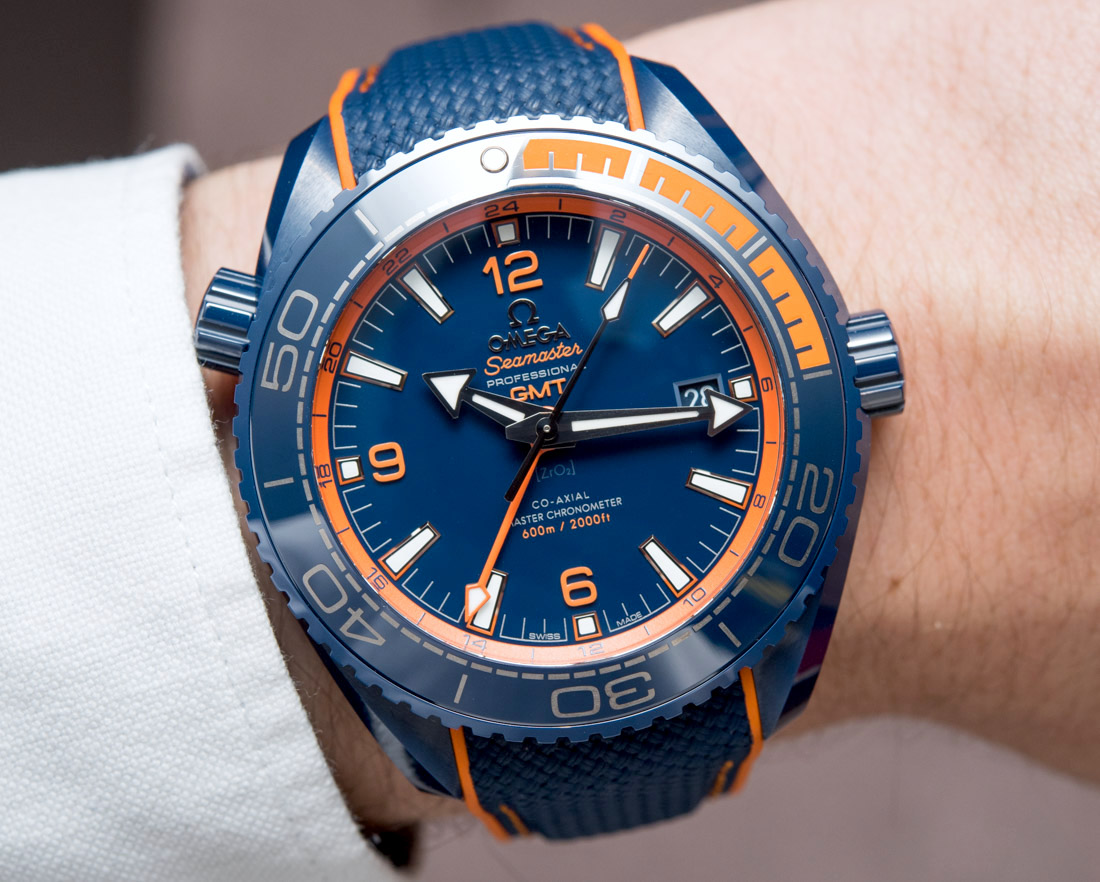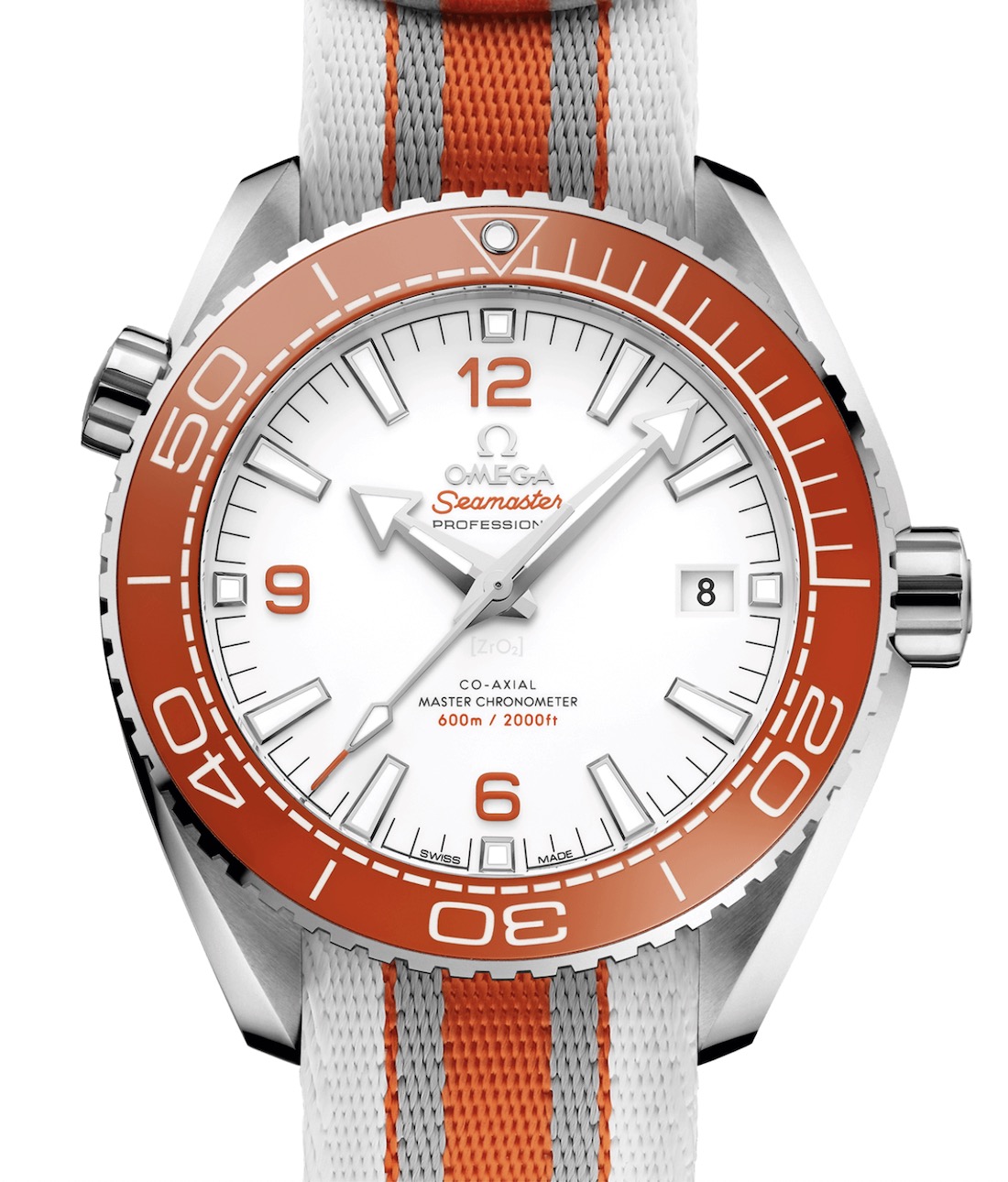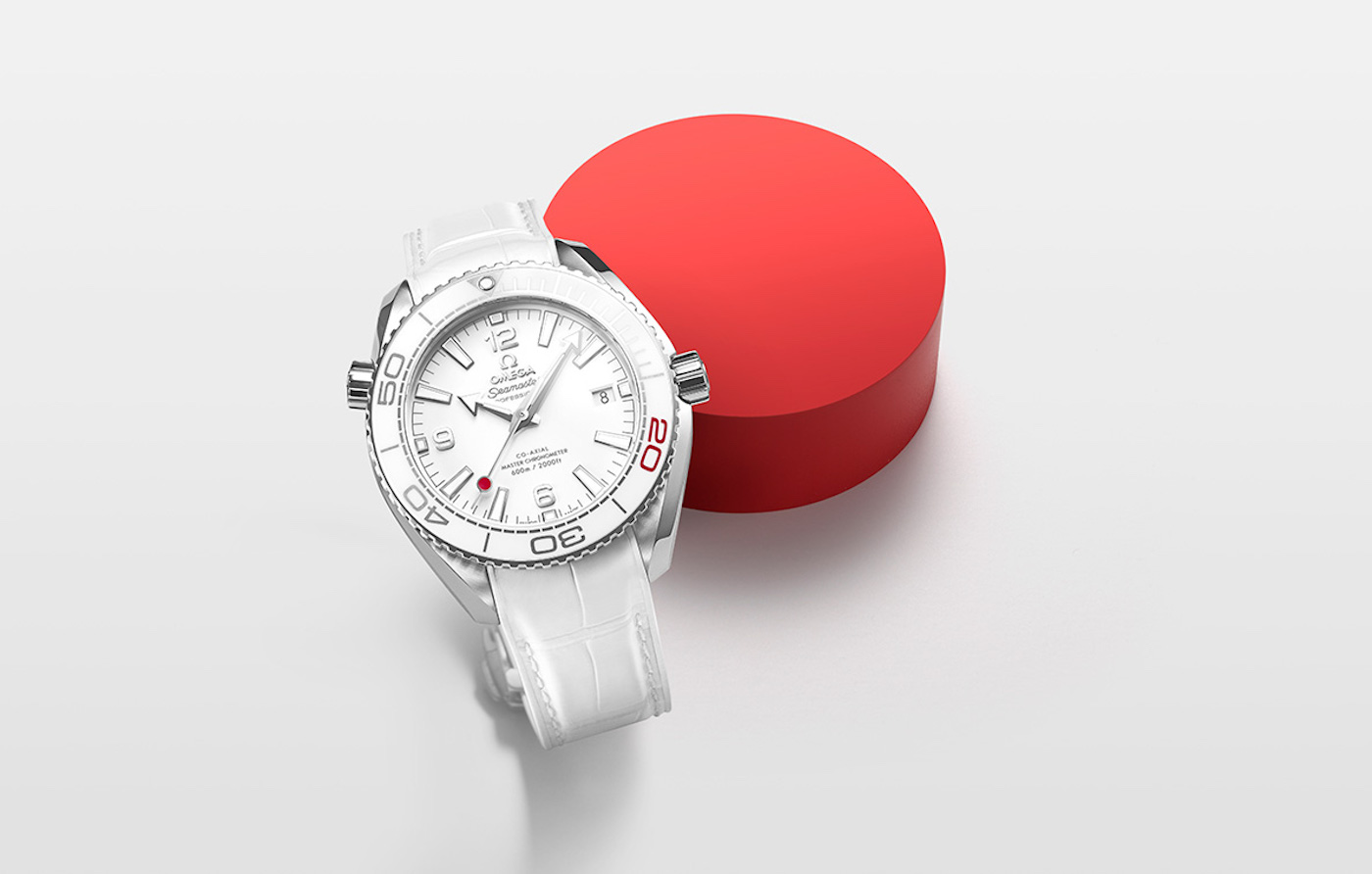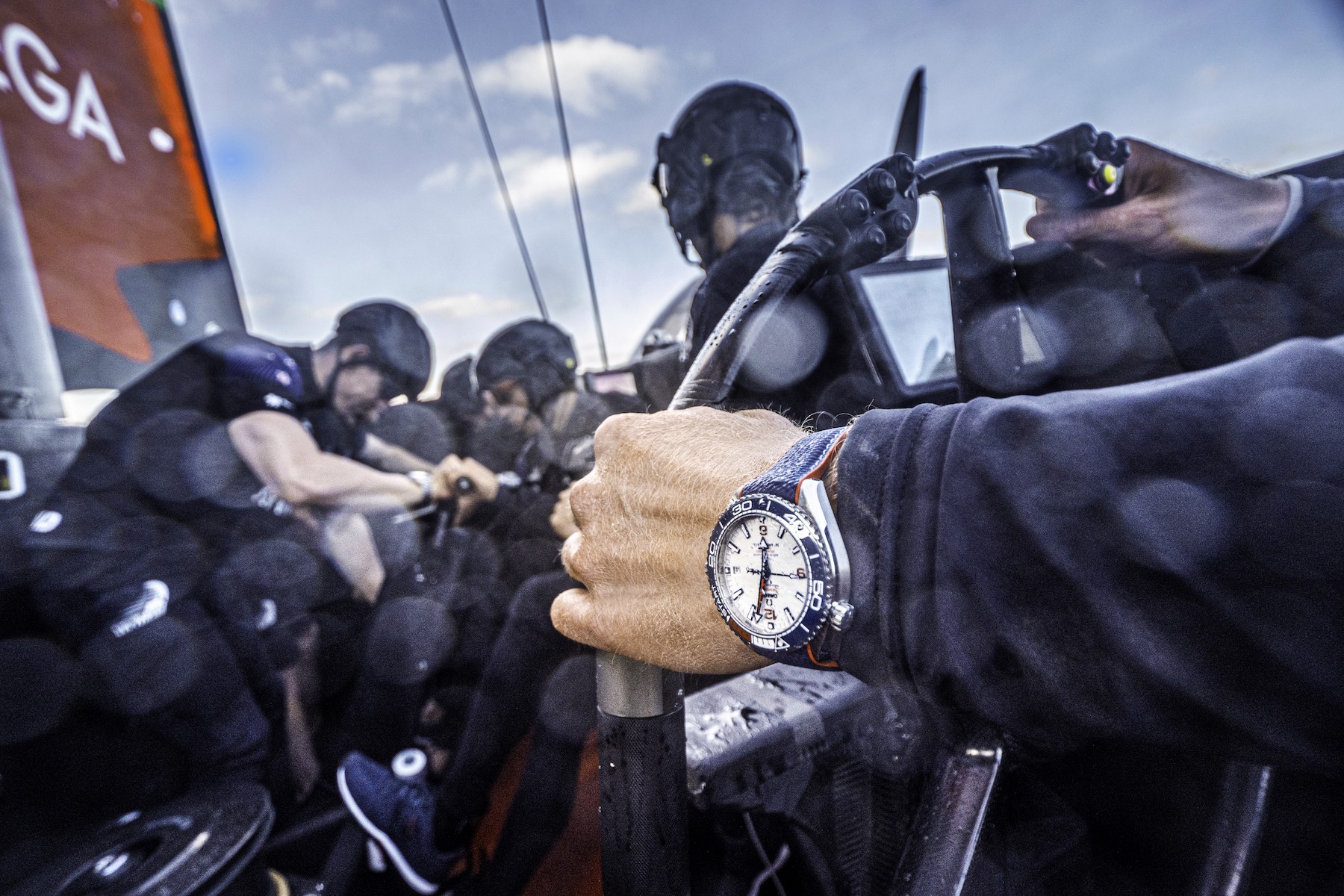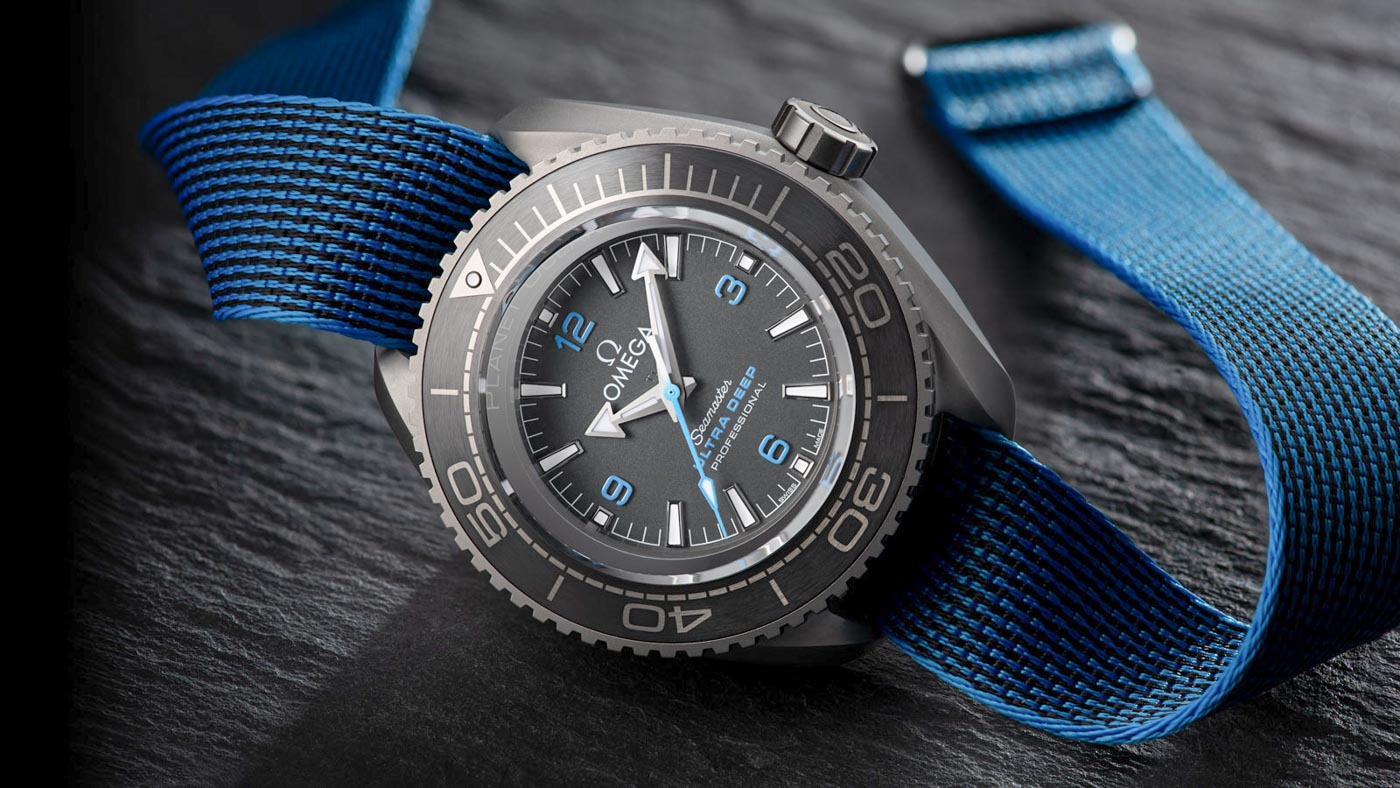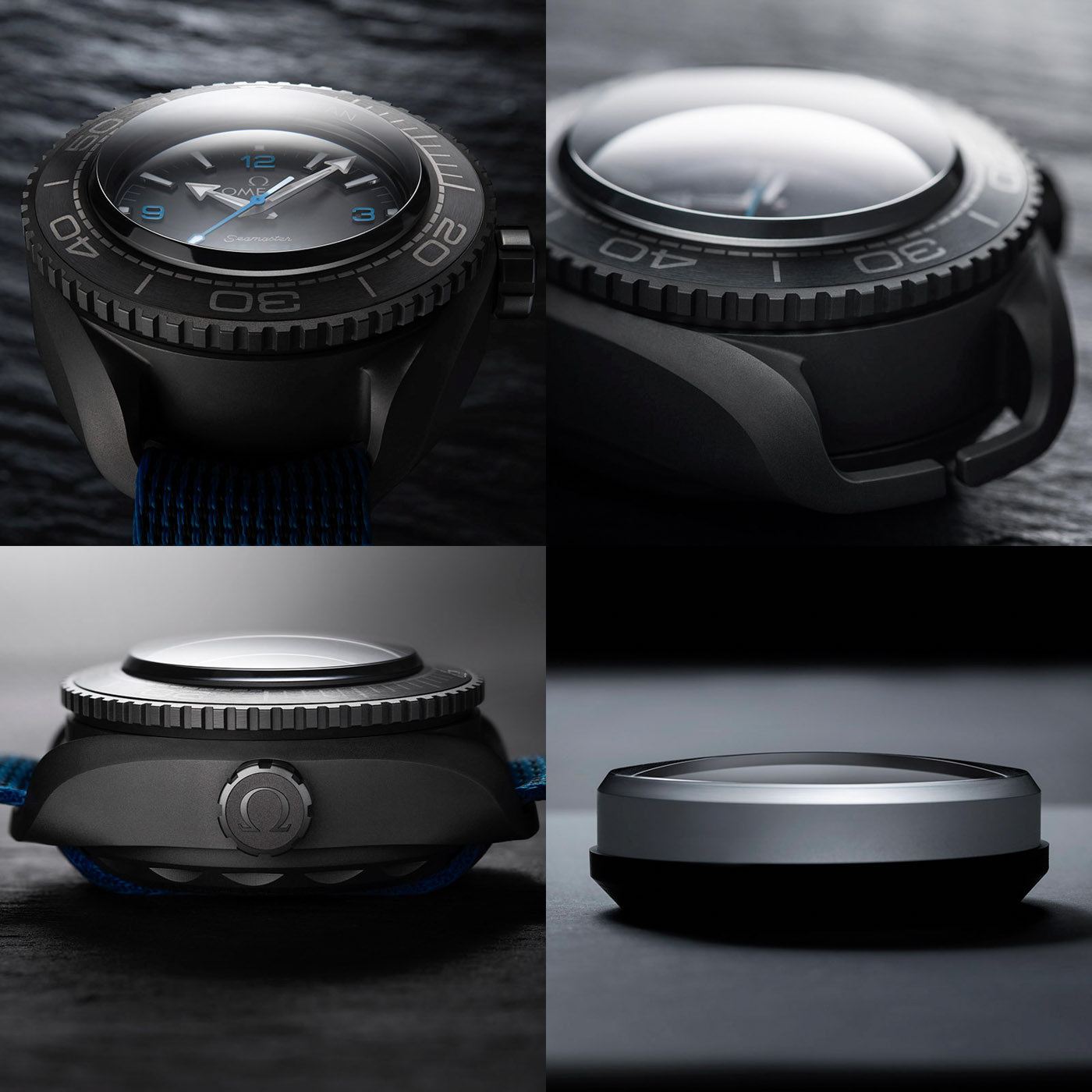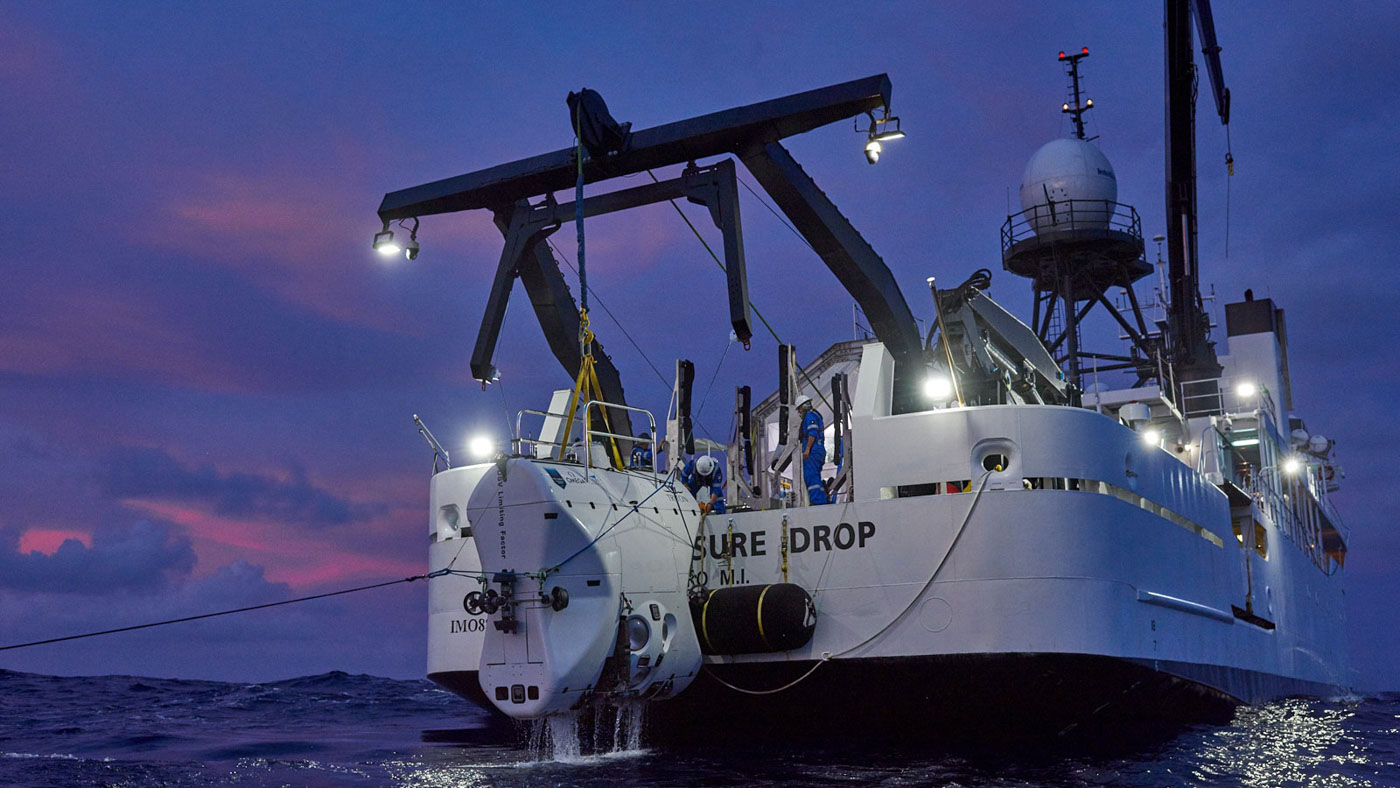In this article, I am going to go through the evolution of this luxury dive watch and track the various models, major milestones, and the short but robust history of this luxury dive watch.
Of course, in modern Omega history, the Planet Ocean came fairly late. The Seamaster Professional arrived in 1993 and was the watch first used in their second-greatest marketing feat (after the Speedmaster being the “Moon Watch,” of course). Indeed, the Seamaster Professional (SMP) adorned the wrist of Pierce Brosnan’s take on James Bond 007 in 1995’s Goldeneye (the Planet Ocean got this honor over a decade later in 2006’s Casino Royale). After the SMP 300 came the dressier Seamaster Aqua Terra in 2002, with the PO arriving in 2005 as the line’s higher-end sibling and rounding out the collection.
Too often, I find myself frustrated with the historical baggage so many watches I love are saddled with. What I mean by “baggage” can mean a lot of things: unwillingness to innovate because of a romanticized view of a piece’s history; watches focused on anniversaries or years commemorating landmarks; ad nauseam mention of iconic “effortlessly cool” celebrities who wore a watch 50 years ago (seriously, imagine it’s 1970 and watch enthusiasts are losing their minds over what Charlie Chaplin or Cecil B. Demille wore just before the Roaring Twenties). I love that the Planet Ocean line has to deal with none of this and can proudly present itself as a genuinely modern dive watch offering. It’s obviously important to note that that my points above are restricted to the Planet Ocean, not the brand as a whole because that’s an entirely different conversation altogether.
Omega created the Planet Ocean to be a modern luxury dive watch that would compete with the “tried and true” comparable offerings like the Rolex Submariner. It’s also worth noting that the Seamaster line overall has always been intended as more of a luxury piece in the body of a solid tool watch rather than a tool watch that eventually found its way on the wrists of well-heeled watch lovers.
One point of note, I am going to keep this list to non-precious metal models and will also not go through the history of the Planet Ocean chronograph because that discussion, or any discussion of a non-Speedmaster chronograph from Omega would require a thorough side by side look with the various Speedmaster references being made at any given point, and that is a very long conversation for another day. That being said, all the core references, along with the GMT models, and ultra-modern innovations like the Deep Black, will all be accounted for.
Omega Seamaster Planet Ocean First Generation (2005)
The Planet Ocean was the first diver the brand outfitted with their calibre 2500 movement that featured a co-axial escapement, and it came in three variations when it was launched, which is hilarious compared to the 27 models and 109 variations I see in the catalog now, some thirteen years later in 2018. The first Planet Oceans came in either 42mm or 45.5mm, with a black or orange bezel. The color orange is the unofficial color of the Planet Ocean line, claimed to be one of the most visible colors underwater (a claim I have heard refuted a few times, actually), but I have a feeling the aesthetic stamp was alluring to Omega as well.
First Generation Design
The model that initially inspired the first collection back in 2005 was the Seamaster 300 ref. 165.024, which dated back to the 1960s. This can be a little counterintuitive when understanding the history of the Planet Ocean since they released a true to the original modern watch in the Seamaster 300 Master Co-Axial back in 2014. While nothing close to a vintage reissue, the first generation of Planet Ocean watches clearly wears this design influence on its sleeve. Or rather, on the design of its bezel, hands, and dial. The Planet Ocean asserted its own style, however, with an aggressively sporty look and touches like a helium escape valve. Later Planet Ocean generations would move on with the times in terms of material and style, securing the collection’s place as a luxury dive watch that is very much “of the moment” and isn’t afraid to evolve.
The first generation of Planet Ocean watches featured the aluminum bezel, about 1/3 of which was the untreated inner ring with the outer 2/3 being done in either black or orange. The 120-click coin-edged unidirectional bezel is one of the aesthetic markers and tactile standouts of the Planet Ocean line, joined with the signature helium escape valve at 10 o’clock which has carried through into every Planet Ocean watch. It’s a somewhat vestigial addition that can be about as divisive a feature as date windows, and personally I would probably like the option to not have a helium escape valve.
The matte black lacquered dial along with the faceted arrowhead hour and minute hands (with Super-LumiNova) make for a highly legible and attractive dial across the range. I love the Arabic numerals at 6, 9, and 12 o’clock and the date window is about as least intrusive as it can be since the background of the window matches the dial and there’s no magnifying lens over it. The simple, attractive design coupled with luxury finishes (that have been updated and upgraded with time, as this article will lay out) has been a cornerstone of the success of the Planet Ocean.
First Generation Case
Being the top-tier dive watch line from the brand, the Planet Ocean watches are all water-resistant to 600m (2,000 feet) – double the resistance of the Seamaster Professional of the time. Earlier models like these first-generation watches have a steel caseback with the engraved Seamaster logo featuring the recognizable seahorse, aka Hippocampus. Interestingly and of note, Omega claims that with the Helium escape valve unscrewed the watch is still decently water-resistant to 50m. I assume this is relevant if only to ease the minds of forgetful owners who like to play with their watches.
One final thing to mention about all Planet Ocean watches, old and new. These have always been thick watches, with some recent chronograph versions reaching a downright fat measurement of 18.87mm-thick. The 42mm version of the first generation Planet Ocean doesn’t approach this level of thickness at 14.5mm-thick, but the 45.5mm model is a hefty 17mm-thick. To compare, a 41mm-wide Seamaster Professional at the time would have been about 12mm-thick.
What’s always been impressive about the Planet Ocean is the fact that though it features a domed sapphire crystal, it has always remained highly legible due to the smart decision to use ample anti-reflective coating. More than one Planet Ocean owner I’ve talked to has pointed out how great the AR is, and I’d absolutely agree with them as I’ve always been impressed with the clarity on the dial of my own PO.
Omega Seamaster Planet Ocean + Calibre 2500 Co-Axial Movement
There was nothing completely new about the calibre 2500 movement when the Planet Ocean launched in 2005, though the movement had slowly been refined since 1999 when Omega purchased the co-axial technology from the legendary George Daniels.
The 48-hour power reserve calibre 2500 has been updated several times since it was released in 1999 (Rob Caplan of Topper got into the history here), and the first generation Planet Ocean was outfitted with the third iteration of the movement or the “C version.” The A version from 1999 was based on the earlier calibre 1200, which was based on an ETA 2892-A2 movement. The B version came soon after in 2000 and included an updated and more resilient palette bridge. Rob explains “The primary difference between B and C is that the C slowed down the movement from 28,800 vph to 25,200 vph. With the modern version of the 2500 calibre, the main feature benefit over a 1200 calibre is that it boasts a service interval around double that of its Swiss lever escapement predecessor.”
Planet Ocean First Generation Value
The larger 45.5mm versions (black bezel ref. 2200.50.00 and orange bezel ref. 2208.50.00) differed from the 42mm models in that they were significantly thicker at about 17mm-thick and had wider 22mm lugs a watch that size would suitably need. In terms of value there was never really a market preference that made one model into a “collector’s item” more than the other, as examples of either trade for between $3,100-$4,500 depending on condition and whether the watch in question comes with the box or papers. When new, a ref. 2900.50.91 (black bezel on rubber strap) retailed for $4,400.
While I can’t find reliable information to confirm an at-the-time MSRP for the 45.5mm PO, I do know that a ref. 2201.50 (black bezel on bracelet) retailed for $3,400 USD in 2006. Seamasters have a bit of a reputation for taking big knocks on resale value, but I’m seeing a few of these references for sale (with box and papers) between $3,100-$3,500. Of course, adjusting for inflation, the price of $3,400 in 2005/2006 would be closer to $4,300 in 2018.
Long story short, any generation of the watch shouldn’t be seen as an investment. It’s a mass-produced luxury product that Omega has no problem constantly updating and changing. Buy it because you love it.
Enter James Bond 007
The Omega Seamaster Planet Ocean connection with James Bond is indelible at this point, and naturally, the Planet Ocean found its way onto Daniel Craig’s wrist in 2006. As I mentioned in the introduction to this article, Bond had been wearing a Seamaster since 1995’s Goldeneye but had opted for a Seamaster Professional 300M for nearly a decade.
Casino Royale (2006)
In Daniel Craig’s debut foray as James Bond in 2006’s Casino Royale, he actually wears two Seamasters. During the more action-packed scenes earlier in the movie (I’ve seen the movie a handful of times, though admittedly I did not do any re-watches for this article) you see Bond wearing an Omega Seamaster Planet Ocean ref. 2900.50.91, which is the black bezel 45.5mm model on a rubber strap. Later, during the more “civilized” scenes in a Montenegro Casino, he wears a Seamaster Diver 300M which he likely had an easier time keeping under the cuff of his shirt since the PO is 17mm-thick and the Seamaster 300M is closer to 12mm- thick.
Of course, it wouldn’t be a complete exercise in co-branding without a limited edition watch. Though the Planet Ocean that Craig himself wore in Casino Royale would go on to fetch around $200,000 at auction, Omega released 5,007 pieces of the Planet Ocean ‘Casino Royale’ ref. 2907.50.91 back in 2006. It’s the same watch as the non-limited edition model and kept the Bond touches on the dial to a minimum with an orange “007” gun logo counterweight on the seconds hand. Turning the watch around you see the “Casino Royale” engraving on the caseback as well as what number out of 5,007 that particular watch is. These aren’t too hard to find, and you can routinely find a number of examples for sale between $4,500-$5,000.
Quantum of Solace (2008)
Moving to 2008, Craig reprised his role as 007 in Quantum of Solace, though the Planet Ocean he wears in the film didn’t have to share screen time with any other timepiece. This time Bond wore the smaller 42mm ref. 2201.50.00 with the black bezel on a steel bracelet. Naturally, there was a corresponding limited edition watch as well, though it came in the form of the bigger 45.5mm Omega Seamaster Planet Ocean 600m Quantum of Solace ref. 222.30.46.20.01.001 which also came in 5,007 pieces.
Omega went overboard with the James Bond branding here, with “Quantum of Solace” and the 007 pistol being laser engraved on the crystal. It’s the in-your-face branding but also the fact that with the “Omega Seamaster Professional” text at 12 o’clock and the movie branding right above the “Co-Axial Chronometer 600m/2000 ft” you have nonstop vertical text between 12 and 6 o’clock. I do like what Omega calls the “Walther PPK grip texture” on the dial (presumably designed after the grip on Bond’s pistol of choice) as it adds a unique texture. On the caseback you’ve got the 007 logo. It’s cool if you’re a fan, though Quantum of Solace doesn’t really even rank anywhere near the top of Craig’s Bond films. These pieces hit the market relatively frequently, and fetch something between $4,500-$5,500.
Skyfall, or Teaching an Old Dog New Tricks (2012)
After a four-year break came 2012’s Skyfall which, along with Casino Royale, is one of my favorite modern Bond films. A story about human intelligence facing fading relevancy in a rapidly digitizing world, the film presents a perfect metaphor for the role of mechanical wristwatches in that same changing world. Subtly turning the cliche on its head, someone says “old dog, new tricks” in the affirmative sense, so an old dog can learn new tricks. Another good horological metaphor, since this Bond wears the second generation of Seamaster Planet Ocean watches (released in 2011) with “new tricks” like an upgraded movement in the in-house caliber 8500 and a ceramic bezel.
The limited-edition watch released for Skyfall was the Omega Seamaster Planet Ocean Skyfall ref. 232.30.42.21.01.004 which came in the smaller 42mm case. Fortunately, Omega pulled back from the over-branded Quantum of Solace Planet Ocean by having a fixed 007 logo at the 7 o’clock position and a checkered black matte dial. Turning the watch over, the engraved steel casebacks of previous models are gone, switched out for an exhibition caseback with a relatively subtle “Skyfall 007” printed on the rotor of the new Caliber 8507 movement. Naturally due to the updated model, these trade for more than prior Bond Planet Oceans with current examples asking between $6,500-$7,200.
An interesting tidbit is the fact that the blue-dialed Aqua Terra that Bond wears in Skyfall (non-branded) tends to fetch a real premium with collectors. It’s not a Planet Ocean, but the reference 231.10.39.21.03.001 should at least be noted in any discussion of modern Bond and Omega. Let’s now exit the world of James Bond and get back to reality. To begin, we need to look at the 2009 limited edition Planet Ocean watch that’s both the gateway to the line’s second generation as well as one of the most desired examples of any Planet Ocean produced.
Planet Ocean Liquidmetal & The Transitional Phase (2009)
In 2009, Omega introduced Liquidmetal to the world by way of releasing the limited edition Omega Seamaster Planet Ocean ref. 222.30.42.20.01.001. Possibly the single most desired Planet Ocean, this is a transitional 42mm model that was limited to 1,948 pieces and while it debuted the Liquidmetal ceramic bezel, it ran on the outgoing caliber 2500 movement which kept the watch at 14.2mm-thick, which is slimmer than the later caliber 8500 Planet Ocean’s 15.7mm. On the dial you’ll notice the “Zr02” text, orange “Seamaster” text, and a glossy finish instead of the previous matte dial, all of which became design staples of future Planet Ocean watches.
A lot has been said about the technique and development process of Liquidmetal, but I quickly want to explain its purpose. As a malleable protective alloy applied over the ceramic bezel, it not only strengthens the ceramic and prevents discoloration, but it also seeps into the engraved indices and numerals (see above image of a Rolex Submariner bezel demonstrating this). Above is an image of the bezel on a ceramic Rolex Submariner that saw a lot of, let’s say, “indelicate” use for several weeks and the accumulation of particles and dirt in the engraved parts of the bezel show clearly. Below that is an image of a Liquidmetal bezel on my Planet Ocean which totally avoids this. Having worn both pieces extensively, I really learned to appreciate the superiority of the Omega bezel due to this material.
It’s nothing new anymore, but Liquidmetal is quite simply a titanium alloy which is the result of a mixture of various metals including zirconium and nickel. Liquidmetal is very elastic and malleable so when it is used with ceramic (in this case on the Planet Ocean bezel) it results in a more durable and attractive bezel than would be produced by a simple ceramic bezel. Of course, Omega isn’t the first to have proprietary materials technology incorporated into bettering their ceramics. The most notable example here would be Rolex and their use of Cerachrom.
How is Liquidmetal utilized? Well, Omega starts with the ceramic base of the bezel which is created by making a ring of zirconium oxide and plastic, the latter of which is removed in the 1,000-degree baking process. The purpose of the plastic is to give the ceramic ring its distinctive color, which Omega was making in black, blue, and white for the Planet Ocean line at this point. (It would be a little longer until they could achieve other colors such as orange in a Liquidmetal ceramic bezel.) After this process, the ceramic bezel ring is fitted into the rotating bezel mechanism, cut, polished, and laser engraved with markers and numerals.
After this is when the Liquidmetal comes into play, with a thin ring of the material placed and compressed onto the ceramic bezel through a heating and pressure process. Next is the process I really want to see done in person one day. At this point, there is just an unrefined layer of melted Liquidmetal on the ceramic bezel which has also seeped its way into the laser-engravings. Because ceramic and Liquidmetal have different properties and melting temperatures, Omega can now polish off the excess Liquidmetal and have a beautifully finished bezel that is stronger, more corrosion resistant, and more resistant to color fading.
As for the Omega Seamaster Planet Ocean limited edition Liquidmetal watch, it asked for a serious $2,000 premium over the comparable existing 2201.50.00 with an asking price of $5,700. That might have seemed like a lot but from the few that come up for sale, you can now expect to pay between $8,800-$10,000. Again, I’d say this is likely the most desired Planet Ocean among collectors and enthusiasts.
Omega Seamaster Planet Ocean Second Generation (2011)
It was six years after the debut of the Planet Ocean when we got the official revamped lineup of watches that made up the second generation of the top-tier dive watch. The biggest change, of course, was the addition of the in-house Caliber 8500 which replaced the outgoing generation’s ETA-based caliber 2500. The newer watches outfitted with the in-house caliber 8500 would gain the new distinction of being called “Co-Axial Chronometer” as well. Though the caliber 8500 had been around for a couple of years at this point, it was in the 2011 Planet Ocean that the movement adopted the use of a silicon hairspring. To briefly run down what else is new: a 37.5mm case joining the existing 42mm and 45.5mm cases; titanium case models; and the introduction of blue and white bezels and dials.
Planet Ocean Second Generation Design
There are a lot of noticeable aesthetic differences between the first and second generation Planet Oceans, one of the most obvious being the ceramic and Liquidmetal bezel I just previously discussed. You’ll also notice differences like more elaborate and larger applied indices, hour markers, and Omega logo. There’s also the orange font on the text reading “Seamaster” which I am a fan of but I know of several people who preferred the old white text.
If the design changes between the first and second generation had to be summed up in one way, it would be that Omega recognized that in order for the Planet Ocean line to compete with the Rolex Submariner (and that is what the Planet Ocean is, no matter what anyone says), they need to continuously improve, upgrade, and update this model. The second generation was a transitional period for Omega, with some models beginning to adopt traits like a glossy dial and ceramic Liquidmetal bezel, which would soon become universal to the line.
On the dials of the second generation, Omega added white-coated Super-LumiNova to the applied indices as well as the hour and seconds hands, all of which would emit a blue light in contrast to the minute hand and pip on the bezel, which would emit a green light. Where the black dialed model kept a matte dial, the new titanium cased blue dial/bezel model introduced what would eventually be the universal Planet Ocean glossy dial. This is, quite understandably, a divisive decision since not everyone likes a glossy dial.
Planet Ocean Second Generation Case
As I previously mentioned, Omega introduced a new, smaller 37.5mm case which was marketed as a ladies’ watch in addition to the 42mm and 45.5mm case. Another case size isn’t the only thing the Planet Ocean gained, since the addition of the in-house caliber 8500 movement added thickness to the cases. The 37.5mm case is 15mm-thick; the 42mm case is 15.7mm-thick; and the 45.5mm case is 16.5mm-thick. To keep this in context, a modern Rolex Submariner ref. 116610 is just about 12.5mm thick. Side by side, it’s a considerable difference and it should be clear by now that the Planet Ocean has never been a watch for people who don’t like, or at least can’t tolerate, a thick case.
A major change to the Planet Ocean was the addition of an exhibition caseback, replacing the old engraved steel casebacks that featured the Hippocampus. Anyone familiar with dive watches understands that when it comes to water resistance, having an exhibition caseback will always make things harder. Of course, with more and more competing luxury watch brands featuring exhibition casebacks (with one notable exception being Rolex, which has never made a watch with an exhibition caseback), Omega quickly adopted these across the line which was made possible at least in part by the anti-magnetic properties of the caliber 8500 movement. Again, there are trade-offs to having both an exhibition caseback and the in-house caliber 8500, with one of the biggest being that thick Planet Ocean case.
A noteworthy addition in the second generation was offering the watches in a grade 5 titanium case. Titanium options range from just the case with a watch on rubber or a leather strap to a titanium case on a titanium bracelet, though Omega has kept this lightweight metal option to their blue dial/blue bezel three-hand models, GMT, and chronographs. This changed in 2016 when they also added a grey dial/grey bezel version.
Omega Seamaster Planet Ocean + Caliber 8500 Movement
Of course, we can’t talk about the Planet Ocean’s second-generation without going into the then-new in-house assembled caliber 8500 movement. While still sourcing some ETA parts (it is a Swatch Group brand, after all), the 8500 was a big upgrade from the Caliber 2500 in both finishing and components. In addition to the highly advertised and lauded silicon escapement and hairspring, the escapement in the 8500 also uses two mainsprings which allow for a longer power reserve of 60 hours. It also was outfitted with DLC-coated barrel arbors, which reduce friction and wear. Finally, the balance bridge was upgraded to having two arms. Of course, there is the new rotor outfitted on the 8500 which is both more attractive and has the benefit of harnessing energy when moving in either direction.
Beyond the specific improvements in material and design, a more holistic view of the caliber 8500 shows a movement that is designed around the co-axial escapement whereas the 2500 was developed in a way that would allow the Co-Axial escapement to fit in the same place an ordinary escapement would be. It’s also a much, much better-looking movement than the caliber 2500 with more refined finishing, and Geneva waves throughout. Needless to say, an exhibition caseback would not have done any favors for a watch using a movement that looks like the 2500.
One thing that can’t be overstated in terms of improvement in functionality is that the Caliber 8500 allows for an independent hour hand, making setting the time and date very easy to do.
Introducing the Omega Seamaster Planet Ocean GMT
Introduced in 2013, the Planet Ocean GMT was and is one of my favorite iterations of the line. Presented as a clearly high-end capable diver with a useful GMT function (notably with an independently adjusted hour hand) for travelers, Omega also introduced a new 43.5mm case size for this Planet Ocean watch. Omega has never held back on different variations, colorways, or styles of their watches and the addition of a GMT to the Planet Ocean line was a natural fit.
While it’s easy to compare almost any Omega to a corresponding Rolex watch, it’s hard to not see the Planet Ocean GMT as a legitimate alternative to the Rolex GMT Master II – but the two are unique enough in their personalities to exist within the same watch collection. Whereas if someone had a three-hand Planet Ocean and a black Submariner, I’d be compelled to ask “why?” That being said, I have a Planet Ocean in my collection and my next watch acquisition is likely to be a green “Hulk” Submariner, which has its own identity.
Fortunately, the Planet Ocean GMT faithfully built on the successful design language of the second generation line. Only available in the new 43.5mm case, Omega added an orange-tipped GMT hand and 24-hour markers on the bidirectional bezel (of note, these PO GMT ceramic bezels didn’t utilize Liquidmetal). Sure, having a rotating bezel on a GMT watch is a little confusing but if you want to wear a luxury dive watch with a GMT function, then that logic has already gone out the window. Considering sales of the PO GMT, there have been more than enough people who don’t care about this. Also, to give Omega a little credit here, they removed the word “Professional” from the dial and replaced it with GMT as it lacks the 60-minute timing bezel.
Of course, we now have to get back to that persistent topic of thickness, as the GMT clocks in at around 17.25mm-thick. The Rolex GMT Master II is significantly slimmer at 12mm. Of course, thickness isn’t judged in a vacuum. The Rolex is water-resistant to 100m and still has a steel caseback housing the caliber 3186 movement that has a 48-hour power reserve. The Planet Ocean GMT is water-resistant to 600m with an exhibition caseback which shows off the caliber 8605 movement (a caliber 8500 adapted to have the GMT function) that achieves a 60-hour power reserve. So, that extra bit of heft in thickness is understandably justified. When introduced, the Planet Ocean GMT was priced at $7,800.
The GoodPlanet Foundation & Planet Ocean GMT
In 2011 Omega partnered up with the GoodPlanet Foundation, an organization dedicated to raising environmental awareness founded by photographer and journalist Yann Arthus-Bertrand. A year later, the two groups presented a documentary aptly called Planet Ocean, which was actually a majestic exploration of the oceans as well as the creatures that inhabit it, from minuscule to some of the largest on earth.
In 2013, the Omega and GoodPlanet foundation collaboration also resulted in what is my favorite of the first group of Planet Ocean GMT watches. Like with most successful collaboration projects, the GoodPlanet model only subtly tweaks the existing watch. Most similar to the blue dial/blue bezel Planet Ocean GMT, the GoodPlanet version has the bezel hour markers done in orange as well as the GMT hand in full orange. This watch is still available as are all the 43.5mm GMT models, though they are certainly starting to feel a little dated as the non-METAS certified caliber 8605 movement is overshadowed by the METAS certified caliber 8906 introduced in 2016. The Planet Ocean GMT GoodPlanet comes only in steel on a bracelet or on a rubber strap, priced at $8,100 and $8,000 respectively.
2014 Sochi Winter Olympics
Omega has a history with the Olympics (which we’ve covered in detail here) but 2014 saw the first Planet Ocean to commemorate the event, with the Planet Ocean Sochi 2014 limited edition watch. There were actually two versions, a 45.5mm men’s model on a bracelet and a 37.5mm ladies model on a leather strap.
The 45.5mm shares the same basic features as the non-limited edition version with some tweaks. You’ll notice the first ten minutes on the bezel are done in blue and red with the last five left a silverish white, which are the national colors of the Russian flag. Turning over the watch you’ll see that the exhibition caseback showing off the caliber 8500 is replaced with a steel caseback with the engraved Sochi 2014 logo. Of course, 2,014 of these watches were made and retailed for $6,600. These aren’t too difficult to find via Chrono24 and I see almost a dozen for sale between $4,500-$5,000.
The 37.5mm ladies’ model comes on a white dial and bezel, with a white leather bracelet. Again, the 15-minute markers on the bezel are done in blue and red increments, but the 6 and 9 o’clock numerals are also done in red and blue, respectively. I like that the white dialed versions continue to have a matching date window which, as I don’t need to tell many of you, is a small detail that can go a long way. As this is a smaller model, it runs on the caliber 8520; though this version also has the closed steel caseback. These models were also made in a run of 2,014 pieces and had a price of $6,300. I’m sure both of these models are probably circulating around somewhere in Russia, and I see only one for sale (from Poland, though) for $4,500.
Orange Is The New Bezel
Something of a Planet Ocean milestone was reached in 2014, a year after the PO GMT was introduced. For some context, all the PO models with the orange bezels you’d see until this point were aluminum and not ceramic since getting the color done properly in the material wasn’t possible. Just as with 2009’s limited edition Liquidmetal debut Seamaster Planet Ocean ref. 222.30.42.20.01.001, the platinum Planet Ocean GMT Orange Ceramic had the words “World Premiere” on the caseback. The orange ceramic bezel wasn’t the only new development Omega debuted, but this watch also used platinum Liquidmetal.
Again, Omega chose the Planet Ocean line to introduce significant development in materials technology. Where the limited edition transitional Liquidmetal model is one of the most in demand Planet Oceans, this reference 232.93.44.22.99.001 platinum orange ceramic bezel version is the most exclusive. Omega made only 8 of them at a price of $75,000.
Omega Seamaster Planet Ocean Third Generation + METAS
In 2014 Omega announced that they would test their Co-Axial Master Chronometer movements to be not only COSC Chronometer certified, but also the more stringent METAS certified. Thousands upon thousands of words have been dedicated to explaining METAS certification, so I’m just going to very briefly run down what this means as it’s a significant milestone for the brand including every Planet Ocean watch produced in their third generation and after.
COSC certification guarantees a movement’s accuracy between -4 to +6 seconds per day. METAS takes this significantly further, with the movement as well as function of each watch exposed to magnetic fields over 15,000 gauss and required accuracy of between 0 and +5 seconds per day in a series of varying positions and extreme temperatures. Needless to say, METAS certification is far more rigorous than COSC when it comes to accuracy and the peace of mind of not having to worry about everyday magnetism is a huge plus as well.
Fast forward to Baselworld 2016 when Omega made the Planet Ocean line the star of the show. It’s clear by now that the Planet Ocean is characterized by Omega’s relentless dedication to upgrading, improving, and updating the watch with little interest for the idea of a “timeless design.” Eleven years after the debut of the Planet Ocean line, we see the third and latest iteration of the Planet Ocean featuring the new caliber 8900 movement. I was so smitten with this generation of the Planet Ocean that I got myself a ref. 215.32.44.21.01.001, which is the model with the rubberized orange 15-minute section on the bezel on the textured rubber strap.
Planet Ocean Third Generation Design
The design process throughout the life of the Planet Ocean has been one of constant refinement, updating, and experimenting. Once the Liquidmetal process was totally integrated into the watch line, Omega introduced another new method to keep things fresh. By combining Liquidmetal ceramic with vulcanized rubber, Omega achieved an incredibly vibrant orange look that is bright but not shiny. It contrasts incredibly well with the ceramic bezel, and I can speak to that successful aesthetic because I’m looking down at the watch on my wrist as I type.
A lot of people have expressed concern that the rubber could fade over time, but Omega tested it to replicate the effect on the rubber over 10 years and claim that not much changed. I have a feeling that this concern is like that of ceramic cracking or shattering, in that it’s a concern more in theory rather than something that actually frequently goes wrong. I love taking my nail and gently running it over the rubberized section because it is soft like, well, rubber would be but you can tell that it’s also incredibly durable and will hold up well.
While a lot of styles and new variations were introduced in 2016, the three-hand non-GMT third-generation Planet Oceans got some subtle dial changes. New applied Arabic numerals on the dial and a refreshed minute track are about as far as changes to the dial go. Omega introduced a new textured rubber strap designed to look like fabric that is in my opinion, one of, if not the best rubber straps I’ve ever handled.
Planet Ocean Third Generation Case
Omega changed up its cases sizes in 2016, with the three-hand Planet Ocean watches coming in a new 39.5mm case and a 43.5mm case, doing away with the smaller 37.5mm case as well as the larger 45.5mm case (though the chronograph is done in 45.5mm as well as models like the Deep Black and Big Blue, which I will definitely be getting into briefly).
I know a lot of people who find a 40mm case size to be the sweet spot and I was glad to see Omega offer a 39.5mm Planet Ocean. While the 37.5mm is too small to be unisex, this model is absolutely an option for men who just don’t like bigger cases or love the Planet Ocean but have a smaller wrist. I do have to add, however, that the 39.5mm model runs on the caliber 8800 movement which has some differences from the superior caliber 8900.
The single-barrel mainspring used in the caliber 8800 (compared to the dual-barrels used in the caliber 8900) makes for a shorter 55-hour power reserve, albeit only 5-hours less than the caliber 8900. It doesn’t have the jumping hour hand and setting the date is done through the crown which only advances the date forward. In terms of functionality, this is a serious downside. All this being said, the caliber 8800 is still a METAS certified Co-Axial Master Chronometer movement.
The smaller 39.5mm does have an edge over the 43.5mm case when it comes to that one consistent issue that has become almost a signature of the Planet Ocean, and that is of course the thickness of the case. The 39.5mm model is 14.2mm-thick, while the 43.5mm case comes in at a healthy 16.5mm-thick.
Omega did make a change to the bracelet, which now integrates to the case in a way that allows the watch to fit better on the wrist rather than falling past the lugs. The first center link on either lug is shorter, which allows for a better fit on the wrist as well. But the bigger change in bracelet is that the clasp allows adjustment to five positions up to 9.6mm in length. Omega has always lagged behind Rolex when it comes to bracelets and while this is still the case by far, it’s good to see refinement here as well. That being said, I opt for the vastly superior rubber strap here.
Omega Seamaster Planet Ocean + Caliber 8900 Movement
Of course, the addition of the caliber 8900 movement was the biggest upgrade for the 3rd generation Planet Ocean watch. Introduced a year before during Baselworld 2015 and debuted on the then-new Globemaster, the caliber 8900 was the first METAS certified Master Chronometer movement from Omega. The aforementioned section on METAS covers the major developments, but in addition to being accurate between 0 and +5 seconds per day, these movements are also highly magnetic resistant to over 15,000 gauss.
The caliber 8900 still operates at the quirky frequency of 25,200 vph (3.5 Hz) and achieves a very solid and reliable 60-hour power reserve. It’s decorated and finished very well, as was the previous caliber 8500, with a Geneva wave pattern adorning the rotor and much of the rest of the visible part of the movement. Also, the rotor now reads “Omega Master Co-Axial” to further distinguish it from the outgoing “Omega Co-Axial.”
‘Cookies and Cream’ Planet Ocean GMT
Between the updated Planet Ocean watches shown at Baselworld 2016 and the introduction of the Deep Black watches a few months later in June of that year, this black-and-white-bezeled GMT is a model that may have slipped under a lot of people’s radar. Also shown at Baselworld, the 43.5mm Planet Ocean GMT is actually the only METAS certified Master Chronometer GMT watch currently available (mid-2018) from Omega, not counting the Deep Black or Big Blue which don’t have a bidirectional bezel. Omega said that this is the first watch to feature two distinct ceramic colors (whereas Rolex’s GMT is done in one color with one side treated to make it a different color), though I have a feeling that white and black are easier to achieve than some other colors.
A very unusual Planet Ocean, the color scheme here was left to white and black without even a hint of orange. I’ve personally found myself pretty temperate about this watch, though I have given it the nickname of “Cookies and Cream,” which is never a bad thing. But really, you’ve got all the updates and upgrades of the third generation Planet Ocean in a unique GMT. I have to bring up the fact that this watch and the Rolex GMT Master II in steel are natural competitors and, once again, the Planet Ocean will appeal to someone who wants a totally modern option that stands out from the crowd. It’s also going to appeal to luxury buyers who scoff at the idea of a waiting list or a used watch that costs more than retail.
Along with the ceramic bidirectional bezel, updated bracelet, and all the minor tweaks and updates comes the caliber 8906 movement. The in-house METAS certified Co-Axial Master Chronometer movement is Omega’s latest and most refined GMT movement which shares the same silicon hairspring, anti-magnetic materials, 60-hour power reserve, and independent hour hand as the caliber 8900. Some rare good Planet Ocean news in terms of case thickness, this GMT actually shrunk a little bit down from 17.25mm thick to 17.04mm thick, which is far from slim but at least it’s an improvement.
I really, really wish Omega would produce this in the textured rubber strap with contrasting black and white (found on the all-black Deep Black) rather than black and orange. I think that would make this watch into a piece that I’d be totally smitten with because right now it’s currently only available on a bracelet for $8,000 or a leather/rubber strap for $7,900. I understand the decision to not have the textured rubber strap since the watch is more a GMT than a diver so it’s “dressed up” a little bit but I think the strap I proposed would do wonders.
2018 PyeongChang Olympics & Michael Phelps Limited Editions
First off, I know I said I’m leaving the chronographs out of this post but I felt compelled to add the Planet Ocean Chronograph Michael Phelps Limited Edition while also discussing the limited edition three-hand Planet Ocean PyeongChang 2018 Olympics watch. Why? Two reasons: Both are trading at above their original retail price (not something one would immediately guess for either) and these are both limited edition watches that are really good looking. In fact, I’d really not mind seeing either of the designs as a permanent fixture.
The Omega Seamaster Planet Ocean PyeongChang 2018 Olympics watch is the standard third generation three-hander but done in the South Korean flag colors of Navy blue and red, which happen to be a really good looking combination. Omega left out any branding on the dial of the watch. Only when you turn it over does the watch reveal its co-branded identity with the PyeongChang Olympics text and logo on the exhibition caseback. Honestly, this decision bugs me since this text and logo are just stamped onto the exhibition caseback, which kind of takes away the point. I’d have preferred something on the steel part of the caseback, where you’ll find what number out of the limited production of 2,018 watches it is. Obviously, these sold out with a retail price at $6,950, and right now I can find 3-4 available for around $7,400-7,900.
As for the Michael Phelps Chronograph that was also introduced in late 2017, it is a fun and bright orange and blue piece on a white dial that visually pops. And I mean, really pops because the chronograph is 45.5mm-wide and a massive 18.87mm-thick, with the METAS-certified caliber 9900 that’s slightly obscured from the exhibition caseback due to the Phelps branding. Super legible, colorful, and once again, just a fun watch that I can see fitting right in here in Southern California. What’s particularly of note about this watch is that it was an online exclusive, and it’s refreshing to see a brand like Omega embrace e-commerce. Omega produced 280 of these and it seems like they have some available on their site for the retail price of $8,200. Interestingly, I’m seeing about half a dozen on Chrono24 that are asking around $10,000.
Both of these watches show that minimal intrusiveness, good design, and the ability to make some bolder creative decisions makes for limited edition co-branded watches that can hold their own.
Hello Darkness, My Old Friend
You knew it was coming. Yes, after the Speedmaster Dark Side of the Moon and its various spin-off models, Omega decided that its top-tier dive watch also needed to come in a full-ceramic case without any subtlety in either size or price. The 45.5mm-wide, 17.18mm-thick Omega Seamaster Planet Ocean Deep Black watches are carved out of a single block of ceramic and when the watch was introduced in 2016, the near-$12,000 price tag gave sticker shock to immediate fans and skeptics alike. I doubt opinions on whether it’s too big or too expensive have changed in the two years since the watch was announced but if resale value is an indication, then Omega may have pulled off a success story here.
Planet Ocean watches tend to take a healthy hit when it comes to the secondhand market. This is due to a combination of factors including the fact that Omega relentlessly updates them as well as the fact there really isn’t any shortage of them. Omega likely produces close to a quarter of a million watches per year and with the ease of the secondhand market and enthusiast trading, nobody who wants a Planet Ocean of any generation should have a hard time finding one. Getting back to the Deep Black though, a quick search shows that most pre-owned models available are going for between $8,000-$10,000. That’s not a huge drop in value for a watch that retails at $11,700.
Before I continue about the Deep Black, I want to drive one point home with this watch. You have to see it and handle it to properly judge it. It’s just that kind of watch because, personally, I was very skeptical of it when it was first announced and more so when I saw the price tag. After handling it and wearing it around a bit, I was sold. If I had to boil the Deep Black watches into one word, what would it be? Badass.
Anyway, Omega introduced four Deep Black watches: one done in 18k Sedna gold on a leather strap; an all-black model; and two that have either a red or blue rubber 15-minute section on the bezel. The black and gold models are done in a glossy case and dial while the blue or red models keep it subdued with a matte finish, which is a shame since I’d like to see all of them available in a glossy finish. All of them share the GMT-ring on the dial which is a good addition considering Omega is marketing this as a Professional diver as well as a GMT watch for travelers.
As easy as it would have been for Omega to just make a black ceramic Planet Ocean and let that be that, I think it is the attention to detail that has proven the Deep Black to be a success. Little things like the crown and Helium escape valve having matching rubber injected in blue or red for those two models, the proprietary Naiad Lock which is just Omega showing extra care in producing a screw-down ceramic caseback and a matching black ceramic deployant clasp show a cohesive design vision and thoughtful execution. If the price is worth it is up to you, but Omega didn’t give any reasons for someone on the fence to say no to the Deep Black.
A year after the Deep Black watches, Omega introduced the Planet Ocean Big Blue which shares similar specs but it’s, well, blue. In a case made of solid ceramic, Omega has achieved a deep and rich blue color that is much more striking in person than from photos. Omega is clearly investing in developing ceramic technology and methods, and I assume that more colors (all orange?) are coming not only for the Planet Ocean GMT but other pieces as well. We went pretty deep into the Big Blue here but for all intents and purposes, I see the Big Blue as a natural sibling of the Deep Black. Price is also the same at $11,700.
More Orange, Tokyo Olympics 2020, & the 36th America’s Cup
In 2019 Omega introduced a new variant of the Seamaster Planet Ocean, which certainly wasn’t major news but still a pretty attractive new offering with an orange ceramic bezel and white ceramic dial. Orange bezels have been around on the Planet Ocean since the first generation back in 2005 (not to get off on a tangent, but these older aluminum orange bezel Planet Oceans are some of the best deals around right now). The standard 600M water resistant 43.5 Planet Ocean case here measures at about 16.5mm thick and has a 52.5mm lug-to-lug height. Ditto, caliber 8900 movement with 60-hour power reserve.
Available on bracelet or NATO strap, these are priced right in line with their peer models at $6,200 on strap and $6,500 on bracelet.
For the Tokyo Olympics, Omega presented a limited edition Planet Ocean alongside an Aqua Terra, as well. The smaller 39.5mm-case Planet Ocean is all white, with a white ceramic bezel, white ceramic dial, hands, and indices, as well as a matching white leather strap. All white of course, except for the red lollipop seconds hand which is a tribute to the Japanese flag, and the “20” on the bezel is done in a red liquid ceramic. You’ve got the Tokyo 2020 emblem embossed onto the exhibition case back that shows off the caliber 8800 METAS certified movement that has a 55-hour power reserve.
Limited to 2,020 pieces, the Seamaster Planet Ocean Tokyo 2020 limited edition on white leather strap is priced at $7,450.
The 36th America’s Cup limited edition is one of my favorite designs for the Planet Ocean — a red, white, and blue color scheme celebrating the brand’s partnership with the famous yachting event. A take on the 43.5mm case, the 36th America’s Cup adds interesting touches like the seconds hand counterweight done in the shape of the race’s logo. Really, though, the interplay of the white dial with the blue and red touches throughout just looks so good to me.
These are limited to 2,021 pieces and priced at $7,050 but as of now, these are totally sold out.
Ultra Deep & A World Record
In 2019 Victor Vescovo took his vessel down 10,928 meters (35,853 feet, or 6.79 miles) in the Pacific Ocean and broke the world record for the deepest dive. On that submarine was strapped three Omega Seamaster Planet Ocean Ultra Deep Professionals, which became the deepest diving dive watch. As our David Bredan noted regarding Rolex’s previous record:
“Rolex historians and again, diving enthusiasts, will know that the previous record of 10,916 meters below surface was set back in 1960 by Jacques Piccard and Dan Walsh, whose Bathyscaphe Trieste had a Rolex Deepsea Special strapped to its exterior. Then, in 2012, movie director James Cameron attended to best their record but ended up only reaching 10,898 meters — this time with a Rolex Deepsea Challenger being put through its paces.”
This record-breaking feat was made possible by Omega’s “Ultra Deep Technology” which involves a viewport design, manta lugs, heavy use of forged grade 5 titanium, Master Chronometer movements, and a Liquidmetal bond in the sapphire-to-casebody assembly. The stat that each square centimeter can support the 2,400 pounds is still absolutely insane to me, and a testament to Omega’s accomplishment.
There is a lot to discuss about the construction of the 55mm-wide and 28mm-thick grade 5 titanium Planet Ocean Ultra Deep Professional, and I am going to recommend you read our article about it here to get the full details. It’s only been a little over a year since the Ultra Deep broke the world record, but so far there’s been no official news from Omega regarding any application of the Ultra Deep technology in any commercial pieces (well, at least as of June 27, 2020).
So, this has been a comprehensive look at the Omega Seamaster Planet Ocean since its inception through the date of writing in mid-2018 summer 2020. I intend to update and modify this piece as time goes on, but I’d also love to hear from fans, owners, and critics of the Planet Ocean. Since this has been one of the longer articles I’ve written, I’m now going to put on my personal Planet Ocean and enjoy the outdoors. For more information, visit omegawatches.com.

